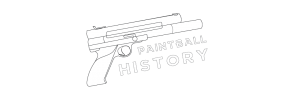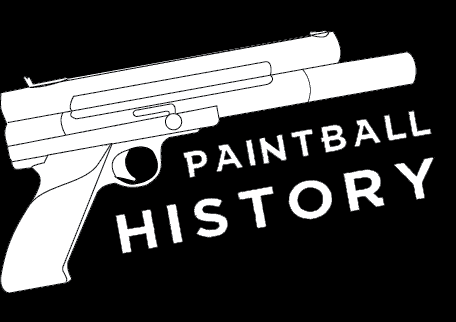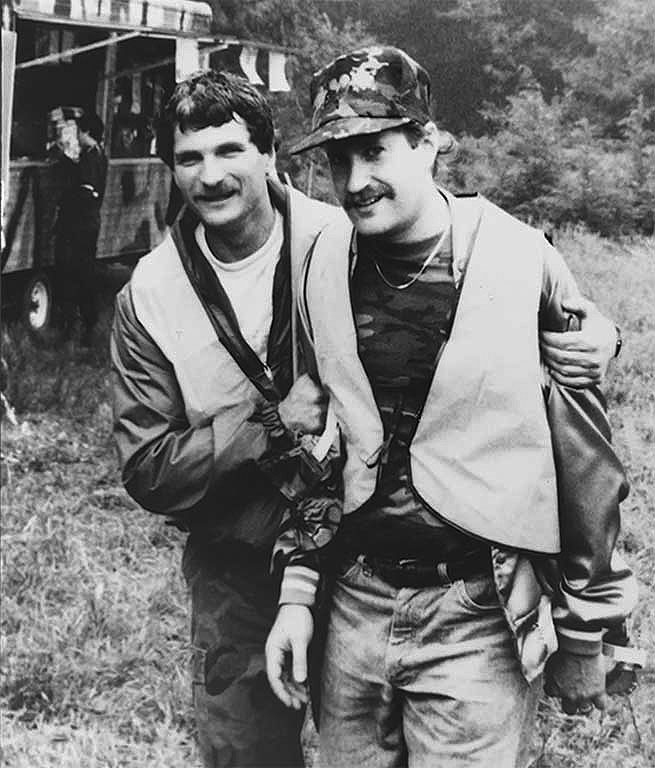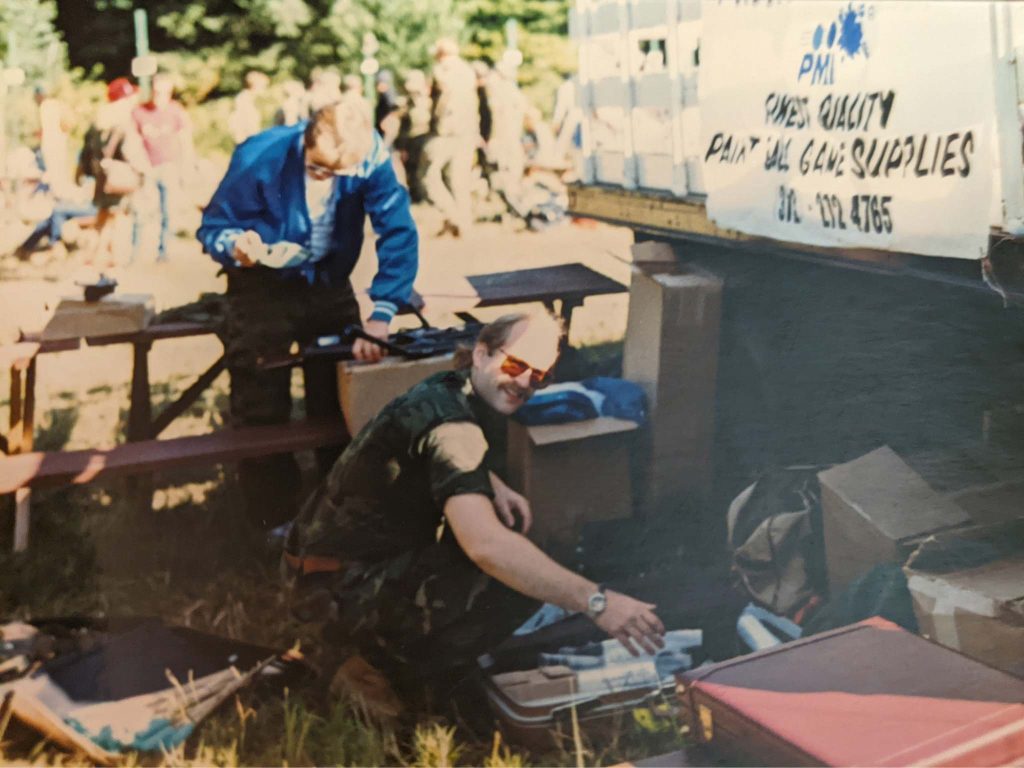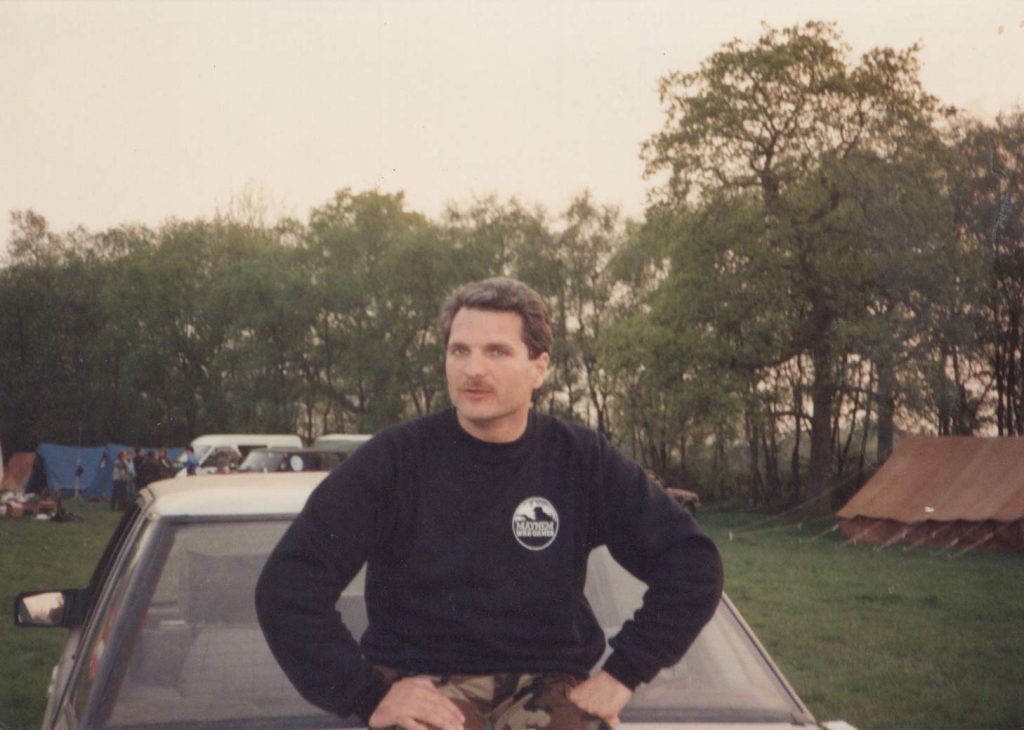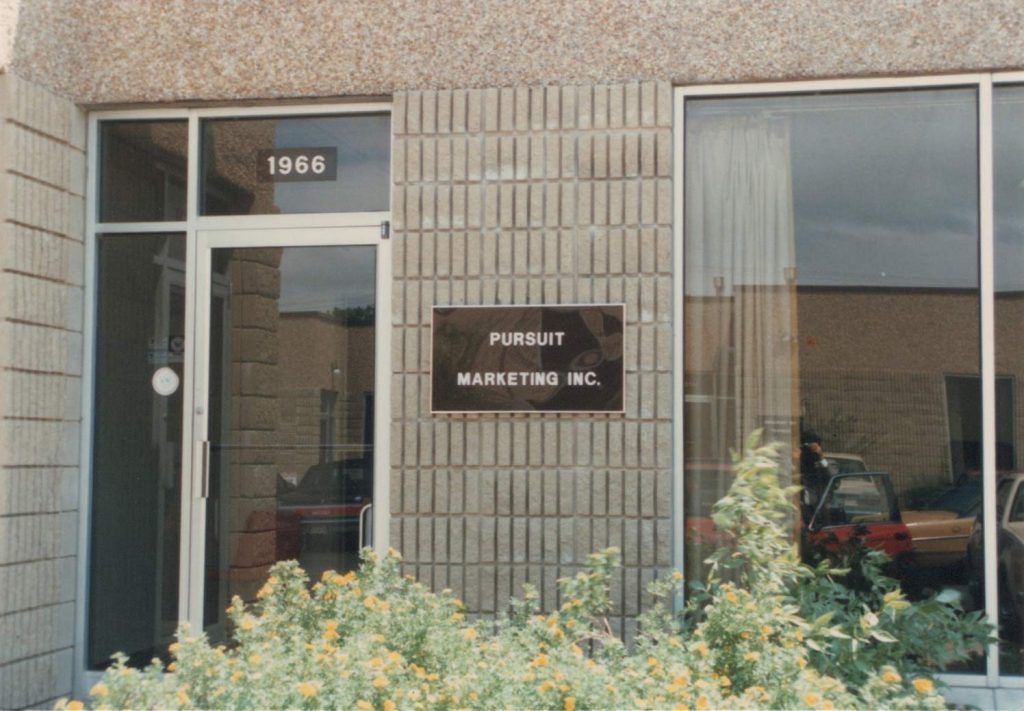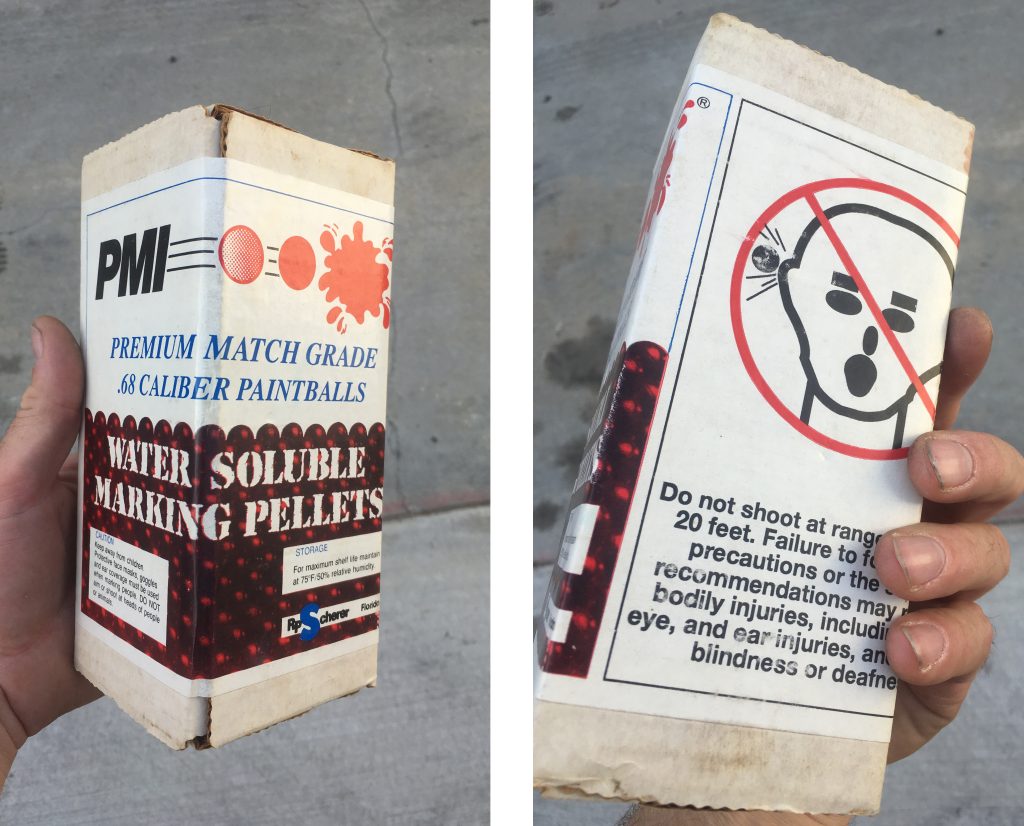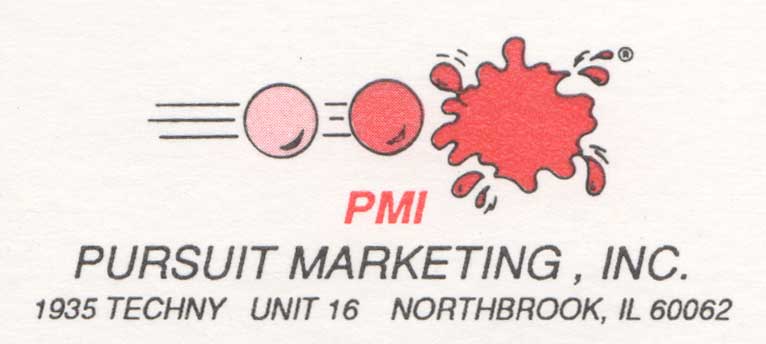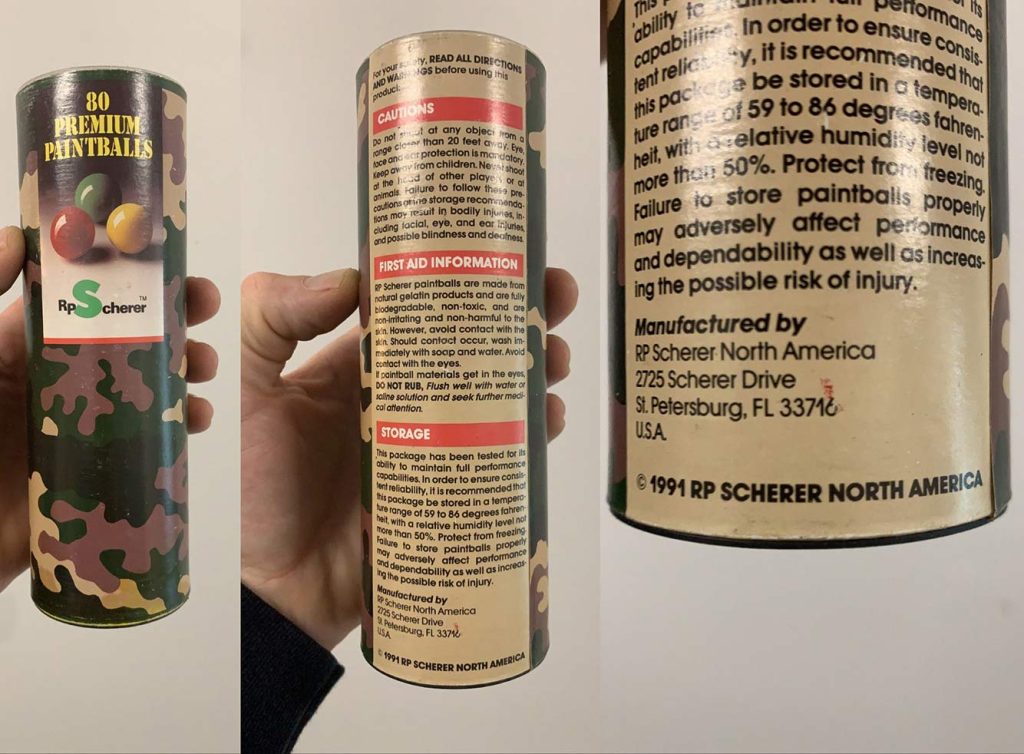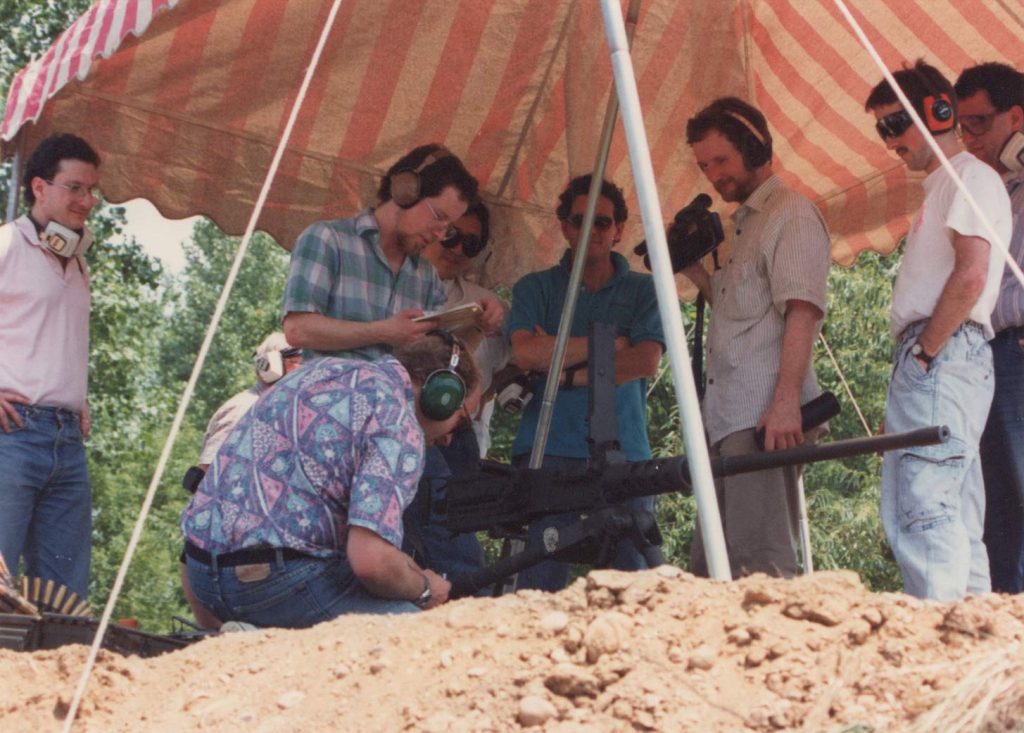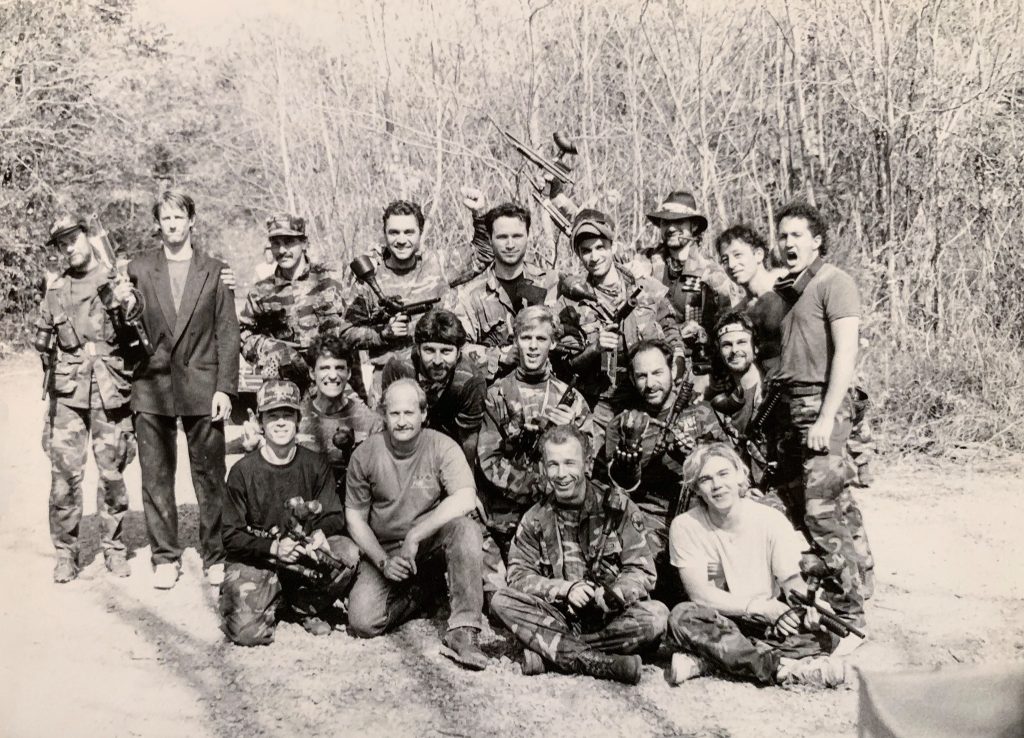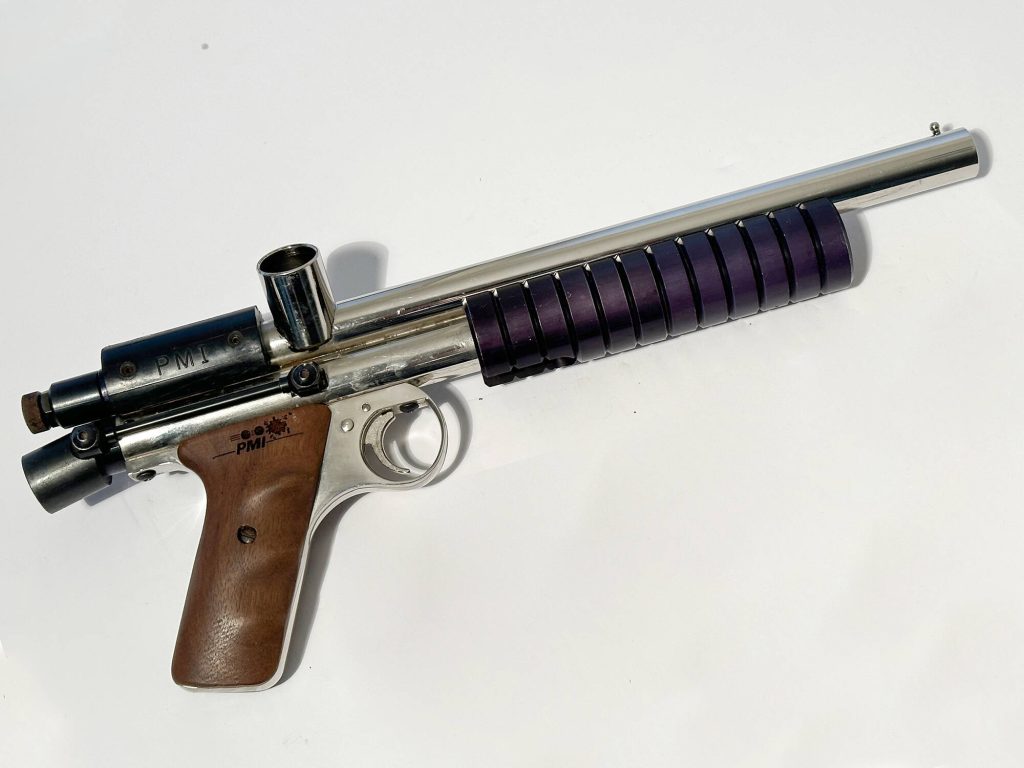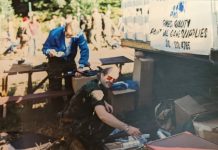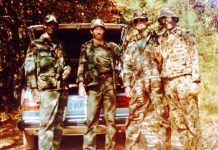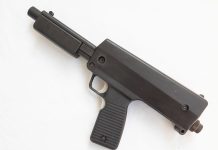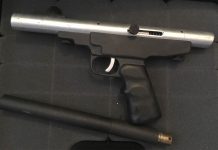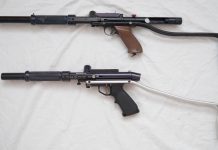Jeff, still enthusiastic about his time in paintball, shared many details on PMI, from the beginnings of their journey in 1982, to the sale of the company in 2005. I very much valued and enjoyed learning from Jeff while compiling this article, and I’m excited to share PMI’s history and how Jeff and David’s business strategy allowed for the transition from the survival game into the Sport of Paintball.
The Survival Game, a Franchise / License Opportunity…
In the early 1980s, a group in Henniker New Hampshire, led by Bob Gurnsey started a business called the National Survival Game, Inc.(NSG).
NSG’s concept originally started as a type of scavenger hunt, conducted by a number of participants simultaneously searching for flags in the woods. Two of NSG’s founding members, Hayes Noel and Charles Gaines, devised the game out of an argument; the underlying challenge was between “country boys” and “city boys”. To win the game, a player needed to successfully come away with the most flags without getting marked out of the game by a CO2 airgun shooting a .68 caliber “softgel ball,” containing oil based paint.

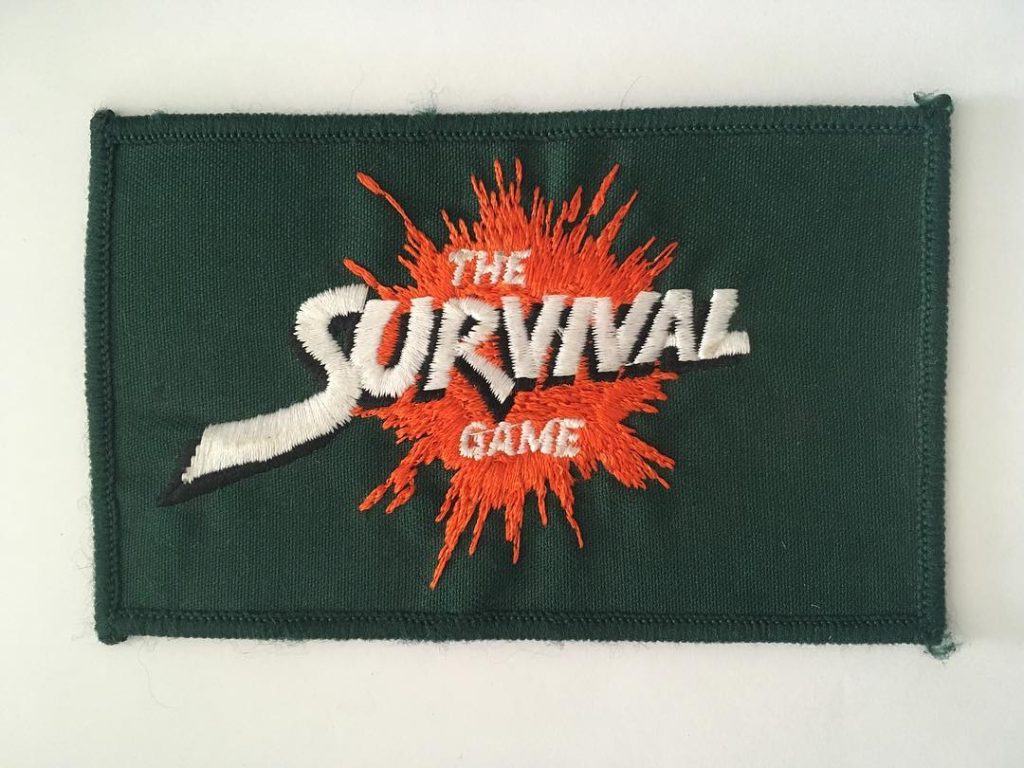
The original CO2 airgun used by NSG was a Nelspot 007, developed in the 1970s around a Daisy BB/pellet gun and sold by the Nelson Paint Company, out of Iron Mountain, Michigan. Nelson also supplied the .68 cal softgel balls containing the oil based paint. The original intended use for this combination was to provide forestry and ranchers with a method for easily and “indelible,” or permanent, marking of tree and cattle.
The activity that Gurnsey’s group developed, The Survival Game, quickly evolved to a team game, with the goal of capturing the opponents flag. Their company, National Survival Game Inc., would go on to sell franchises / licenses to field operators all over the US and Canada based on territory / population. Along with their equipment, NSG provided field owners with marketing and business support.
The franchisees / licensees were obligated by contract to call their fields the National Survival Game and abide by rules and regulations outlined in the contract. The contract obligated field owners to supply their business with products purchased through NSG, which included, in 1982-84, the Nelspot 007 marker, the Nelson softgel oil based paint capsules, AO shop glasses, co2 cartridges and other NSG license goods.
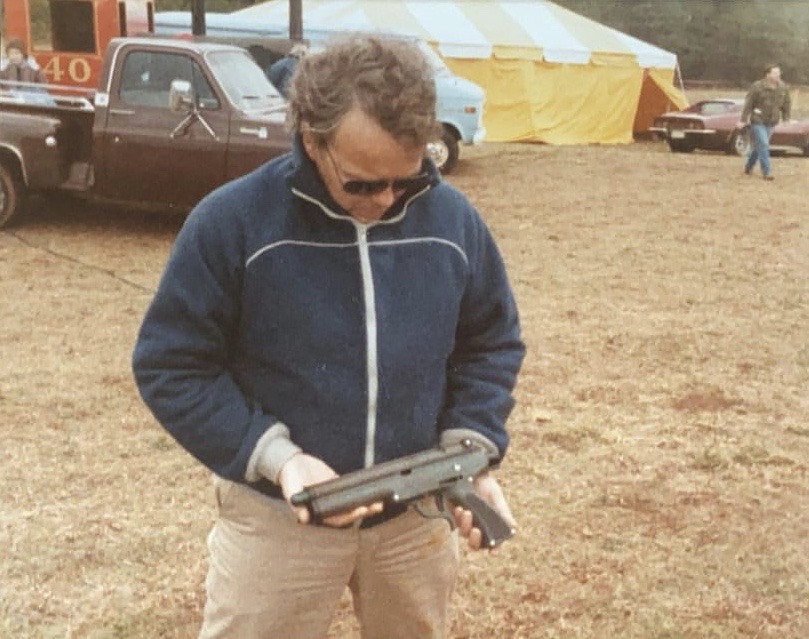
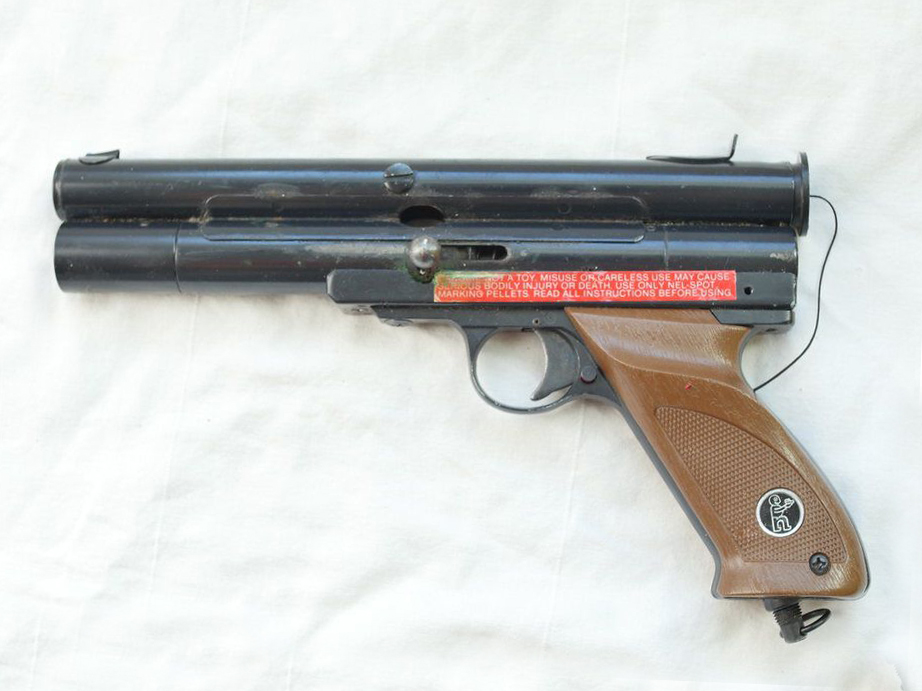
The Downfall of the Survival Game and the Rise of Paintball
As the mid 1980s approached, NSG’s business model, and as Jeff recalls, equipment inconsistency, failed contractual obligations and lack of brand recognition led to disgruntled franchisees / licensees.
Jeff details NSG issues,
“First issue was inconsistent quality of the equipment over time and the repeated failures of products like the goggles, which result in injuries and lawsuits. Second issue was NSG’s onerous contract obligations, which included (but were not limited to) calling the local field the National Survival Game. And the third issue was NSG’s promise to add value to their franchisee worthy of charging gamefield owners a franchise / license fee wasn’t fulfilled (building consumer awareness for the Survival Game).”
In 1984-1985 NSG introduced the Splatmaster to replace the Nelspot 007, and stopped purchasing markers and paint from Nelson.
Made out of fiberglass reinforced polymers (durable plastic), the marker was light (too light) and not very consistent. Banner, a company out of California (who also produced Cal Magnum), was chosen by NSG to provide fields with paint and field owners felt this ball was a downgrade, leaving many disappointed in quality.
As the 1980’s continued, NSG market share of gamefield operators shrank as franchisee / licensee departed from their relationship and sourced their products independently. Eventually NSG succumbed to more than 100 lawsuits for product liability and personal injury resulting in eventually closing their doors.
In late 1982, another company, Pursuit Marketing, Inc. (PMI) began to approach the game with a different business plan. One that catered to, in the words of Jeffrey Perlmutter, “gamefield operators.”
PMI allowed gamefield operators to pursue their business on completely independent terms, no contracts, no territories and the freedom to spark, not just an industry but the sport many have enjoyed and competed in through the years. The following is the story of how PMI persevered and pioneered the Sport of Paintball worldwide in the following decades.
Perlmutter and Freeman as NSG Franchise Owners?
Jeff Perlmutter and David Freeman played the National Survival Game at a field in Marengo, IL (near Woodstock, IL), managed by Dave Nieson, in roughly early 1982. They loved the game and saw huge growth potential. David tried to purchase a Nelspot marker at their first outing but at the time the equipment was only available to rent with entry so the field operator wouldn’t sell to him.
David Freeman remembers that first day out, explaining that “Like most people we had one heck of a good time and the adrenaline was pumping, and [we] enjoyed ourselves immensely. Unlike many people, we were different and in-between games, rather than talk about our rambo type antics, we were talking about [the survival game] being a wonderful business opportunity [and] we agreed there were many ways to enhance the game.”
Soon after that outing, Jeff Perlmutter traveled to New Hampshire and met with NSG president Bob Gurnsey, and NSG’s vice-president of marketing and sales, Gerard Jaggard. Jeff’s objective was to purchase franchise rights from NSG for the Chicagoland area, for his new business venture with his partner David Freeman. The parties quickly came to terms on a price.
After returning to Chicago, Jeff and David were told by NSG that they would need to renegotiate their deal and what the agreed upon territory would be, as Jeff recalls, “NSG reneged on the handshake agreement we had and divided the Chicagoland area into multiple franchises and if we wanted exclusivity David and I would need to purchase all locations for a much higher price.”
Jeff points out that, “Around that time, in early 1982, there was essentially no consumer awareness or brand name recognition for the National Survival Game concept, especially in the Chicagoland region.” Jeff and David, who were ambitious young entrepreneurs in their mid 20’s decided to forge a new path, on their own, without NSG.
Jeff had recently been relocated to Chicago from New York City by the big corporation he was working for. He explains, “I Was quickly disillusioned with the major textile manufacturer I was working for and as fate would have it, was also looking to find a team sport to replace my passion for Lacrosse (a sport unknown at the time in the midwest) that I played at the college level at Syracuse University.”
Jeff explains that “David, a few years older, was south side of Chicago born and raised, and had similar career circumstances, disillusioned working for a big company in the grocery and dairy distribution business.”
Jeff continues, “Some people become highly motivated when they are told they can’t do something…that was clearly the case with David and I. We pooled out resources, I was strong with marketing, branding and sales, and David with manufacturing, distribution and sales as well… We made a great team.”
The Beginning of Pursuit Marketing, Inc. 1982-1993
Concurrent to Jeff’s visit to NSG in New Hampshire, David had contacted Ray Katt, the owner and president of the Benjamin Sheridan Air Rifle Co, located in Racine Wisconsin, less than 100 miles from Chicago. Jeff states that Sheridan was known to be “the highest quality adult airgun manufacturer in the USA.”
David inquired with Ray Katt and Benjamin Sheridan about their interest and ability to manufacture a modified version of their current 5mm (.20 cal) model EB pellet pistol, which was powered by a 12 gram CO2 cartridge.
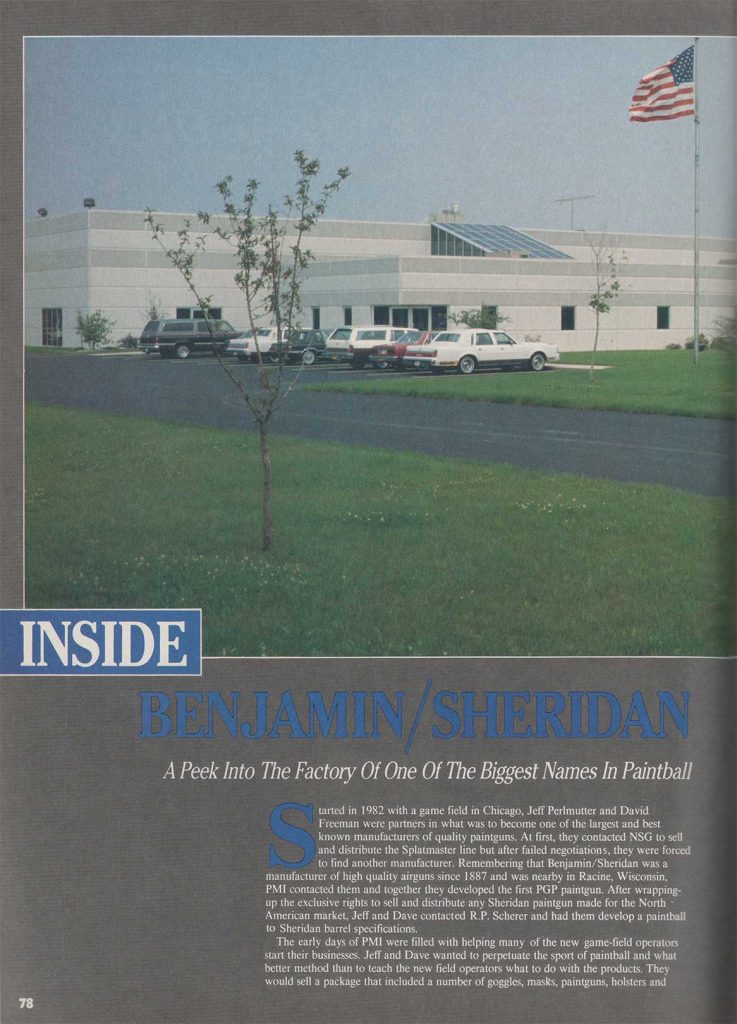
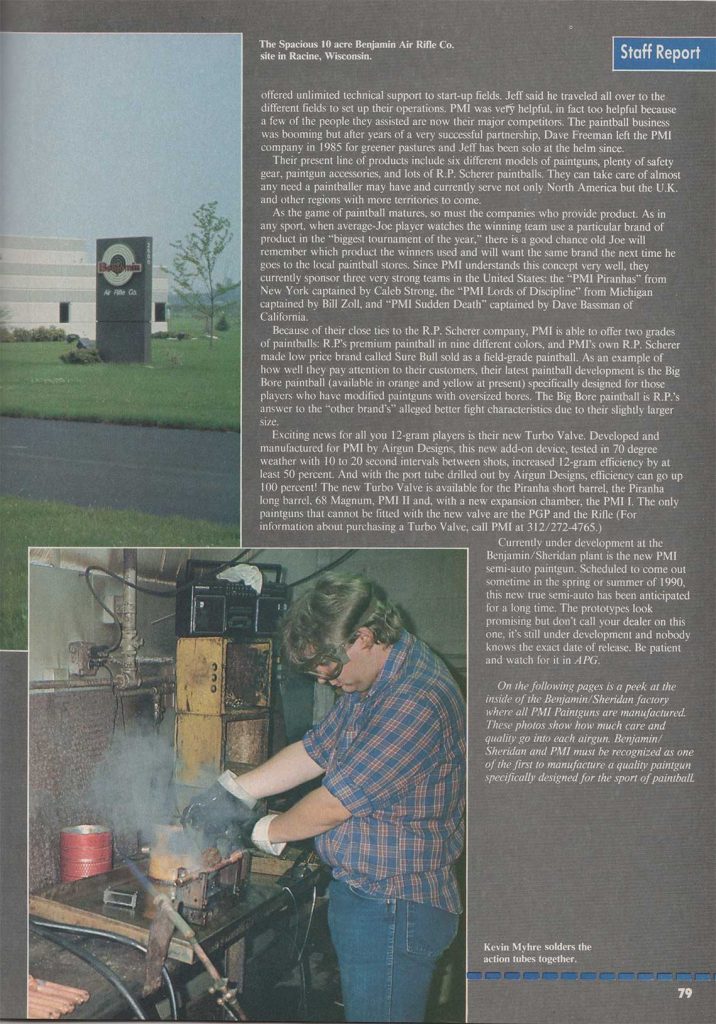
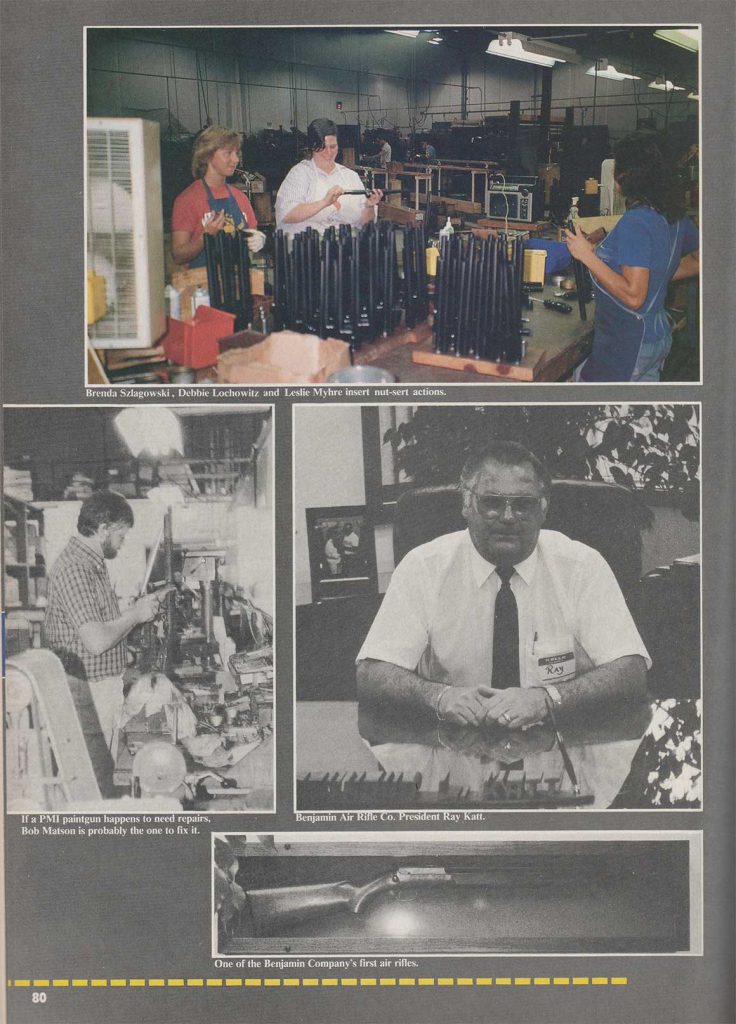


A week later, Jeff and David visited Ray Katt, who agreed to produce prototypes that would chamber and shoot a .68 cal projectile. One model became known as the PG top loader, with three tubes stacked on top of each other and the other became known as a PG side loader, with the feed magazine on the side of the barrel. PG was a name that Sheridan designated and stood for “Paint Gun” and later when a pump was added PGP, or “Paint Gun Pump.”
The PG top loader won out for the gamefield operator market, and the parties agreed to an exclusive sales and distribution agreement. Jeff remembers that, “following the procurement of a supplier for a high quality marker, then we set out to find ammo.”
A water soluble ball purpose built for the game!
At the beginning, NSG was supplying its franchisees / licensees with Nelson .68 cal oil based softgels.
“Although the quality of the Nelson paintballs were good, there was a big problem with the product,” Jeff recalls. The major issue being that a paint thinner, such as mineral spirits or turpentine, was required to erase the mark. Jeff explains that “PMI was able to convince the RP Scherer North America, the inventor of the soft gelatin encapsulation manufacturing process, to produce a water soluble .68 caliber softgel for PMI which had the performance characteristics we had specified.”
Jeff describes their RPS paintballs, writing that “The product was branded PMI Premium Paintballs, and they shot straight at 300 FPS, didn’t break during shipping or in the marker and were easily washable with soap and water.”
Eye Protection and the introduction of the Uvex Google
The last piece of PMI’s product line, other than the 12 gram cartridges, which were common place in the market, was eye protection. Jeff was able to negotiate a distribution arraignment with a distributor of Uvex Optical from Germany. The Uvex google system, along with the green face mask, offered in California by a company called Woodstock (Bill Bower) “were the best performing eye and face protection available for their intended use for commercial gamefield operators,” according to Jeff.
An Alternative to the Franchise / License Model
Pursuit Marketing Inc. (PMI) became an incorporated business of Illinois in December of 1983, and in 1984 moved out of Jeff and David’s apartments into a small office and warehouse in Northbrook IL. PMI embarked on promoting and selling their product line of high quality products to entrepreneurs, packaged as a business opportunity that, as Jeff states, “didn’t require a large capital investment, could be operated on weekend in the woods, and generated lucrative cash profits.”
PMI not only sold the products necessary for operating the commercial gamefield business, but Jeff and David also provided consultation on topics like, “How to market and promote a new commercial gamefield business, safety protocols including proper instruction about how to use the gear and keep goggles on at all times, etc.” Jeff states that “PMI also embarked on major PR efforts, promoting the activity as a sport, which helped create consumer awareness and drove business to the gamefield operators, who were our customers.”
And concurrently, PMI promoted the activity as a recreational sport to consumers which led to participation in the activity worldwide.
The Explosion of Paintball in California
By implementing a more straightforward business model, PMI allowed gamefield operators the freedom to purchase and resell their preferred equipment, which provided them with greater revenue / profit to be used to promote the sport and capture a larger audience. And through this, PMI fueled an explosion of invigorated entrepreneurs and enthralled consumers resulting in bringing great popularity to the sport.
Jeff remembers their success from this strategy, stating, “PMI dominated market share worldwide on the sale of the consumables, which were the paintballs.” He elaborates that, “PMI was successful in structuring a market where there was a lucrative business opportunity for our customers, being the gamefield operator. The sale of the paintballs to the players at the gamefield provided revenue / profit sufficient for the field operator to provide a high quality experience for the consumer.”
Jeff describes their “razor and razor blade business model,” and emphasized a goal of getting as many gamefields open and as many markers out as possible to allow them to sell more of the consumable, which were the paintball.
In 1985 to 1986 there was a boom of activity in California, with many of the original NSG Franchisees finding Pursuit Marketing, Inc.’s business model appealing and breaking out of their National Survival Game, Inc. contracts.
Many customers followed along the same path as Jeff and David, experiencing the game and pivoting their careers to make a business out of it.
Dave Bassman, captain of Sudden Death (sponsored by PMI in 1989) and field owner of Conquest a paintball field in Malibu, California, remembering flyers from the period, around the mid 80s, which listed 50-100 paintball fields and retail locations in Southern California alone.
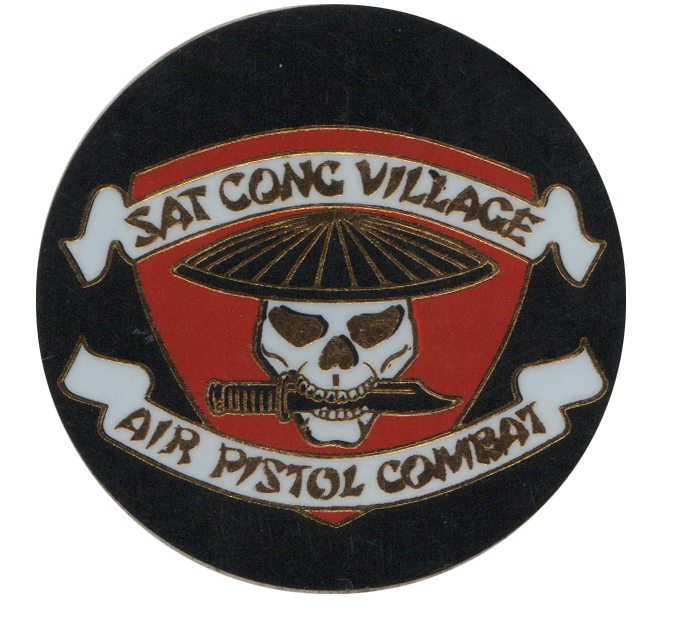
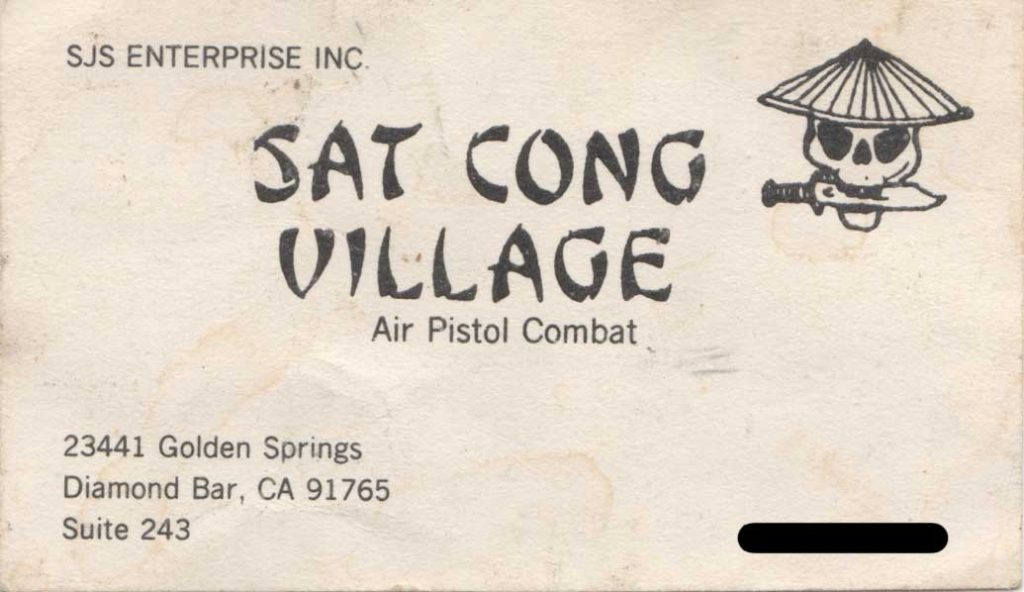
One game field operator, a police officer named Dennis Bukowski, experienced the thrill of the game and started his business, S.C. Village (Sat Cong Village) in 1984, in Corona California, with PMI PG pistols. Dennis purchased his original equipment package directly from Jeff and David. SC Village still operates today as one of California’s longest operating fields.
Other fields in Southern California had previously been NSG franchises or owned large fleets of Nelspot 007 markers. Out of necessity, businesses popped up which centered around modifying and improving the Nelspot 007.
Jeff points out that one of his initial grievances with the 007 was that it was intended for right handed users, and innovations such as pump action modifications “made the marker ambidextrous, which all the PMI markers were,” and goes onto to explain, “You couldn’t sell many paintballs through a broken marker,” which was part of their sale pitch to sell their more reliable Sheridans.
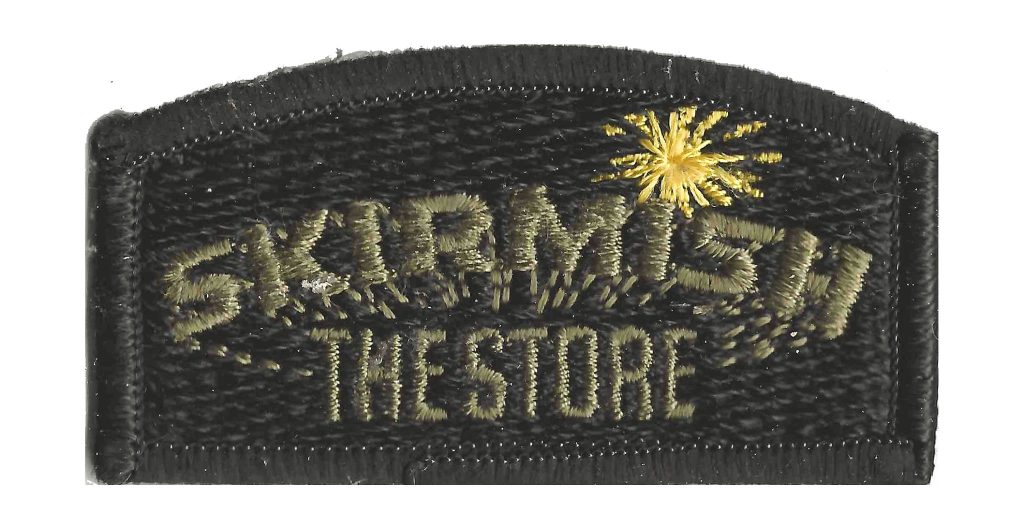
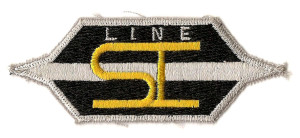
One early pioneers who took this path was Ross Alexander. His companies, Skirmish and Line SI, produced high performance pumps and long barrel kits to retrofit the Nelspot marker. These kits included the Skirmish long barrel and later hugely popular Bushmaster pump kits, designed by Jerry Dobbins.
Ross was a great promoter of the activity in the early days on the West Coast, running several fields and as Jeff credits, “coining the name Paintball,” to describe this new activity.
The name stuck, and soon after, in 1985, the advent of a newsletter / magazine name Frontline was released. This literature was centered around paintball in Southern California and provided a forum for news, advertising and promotion of this new Sport of Paintball.
Exploring Other Avenues for PMI – Law Enforcement and Military Training
Jeff and David also shared an enthusiasm for firearms and pursued selling paintball markers for Law Enforcements and Military training. Jeff explains that “In 1985 I applied for and received a Class III Federal Firearms License, which allowed PMI to buy and sell in fully automatic weapons. Being a Class 3 FFL firearms dealer gave us credibility to sell markers for training.”
Jeff reached out to police departments, to advocate the sale of paintball markers for training. At the time many municipalities had .223 caliber rifles, which were not appropriate or intended for close quarter battles (CQB). PMI obtained dealership rights from Heckler & Koch and offered departments HK’s 9mm MP5 with a program to trade out their .223 Rugers and other long rifle calibers.
Jeff reflects that his ulterior motive, once in the door, was “introducing paintball as a training protocol and I would be considered a credible source for training methods based on my firearm knowledge and licenses.”
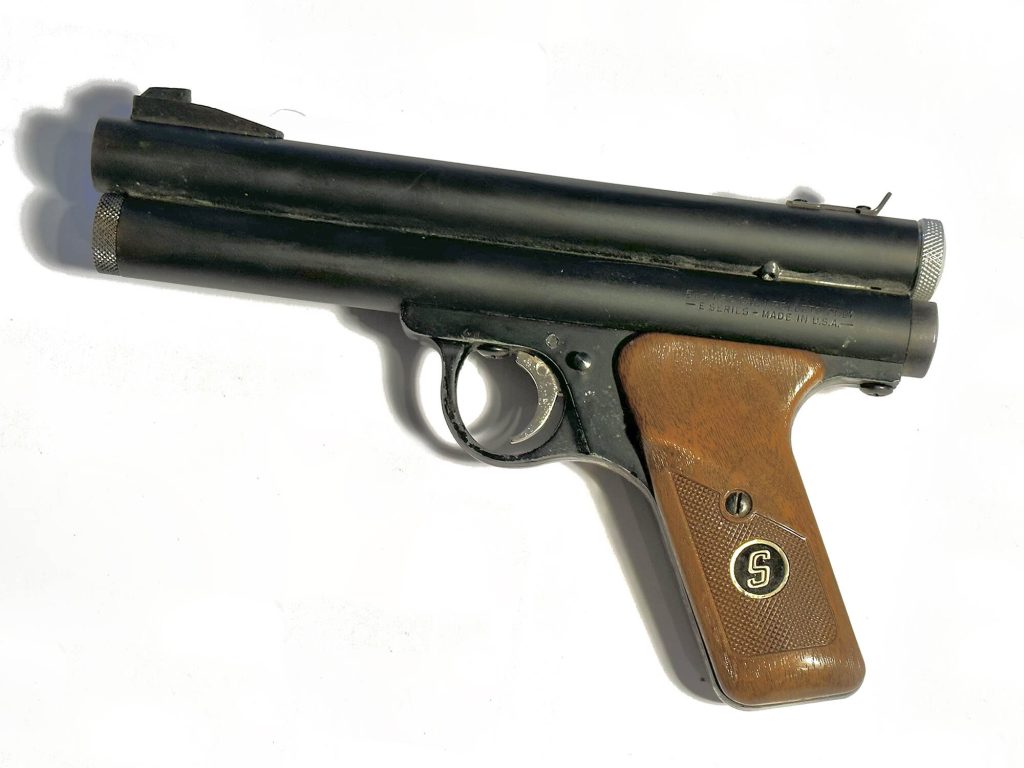
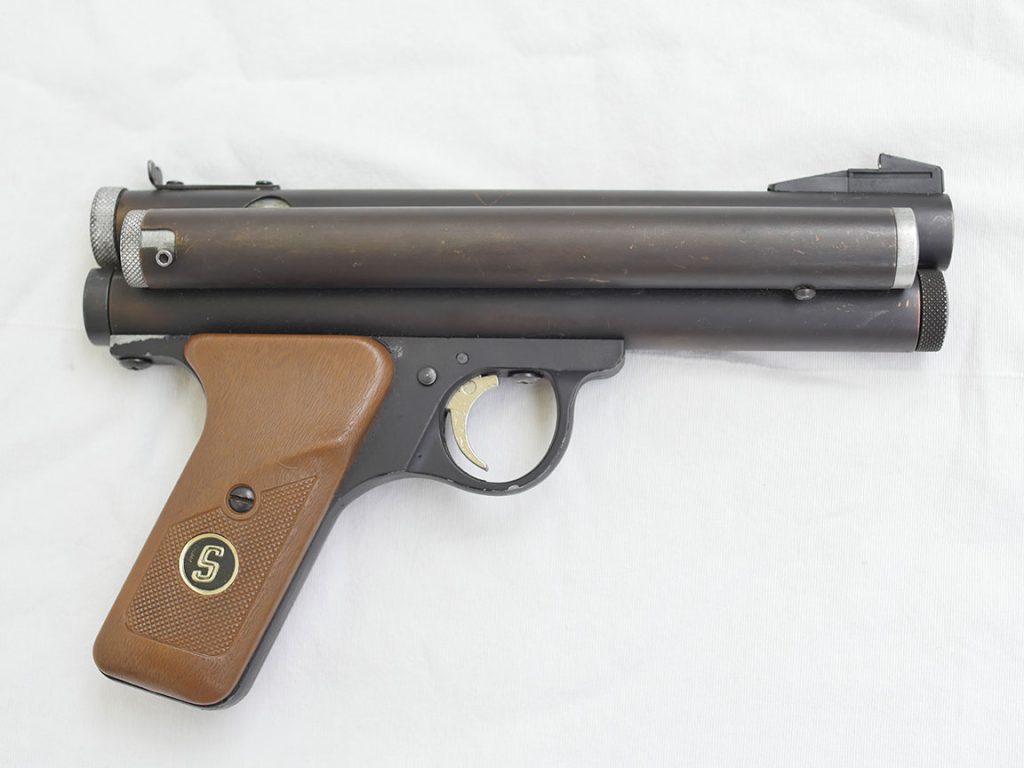
While the top tube PG pistol was preferred for paintball, due to the ease of loading, the side tube PG pistol’s form factor became preferred for law enforcement (LE). With this in mind, through PMI firearms contacts they attracted interest from LE agencies and training academies, who ended up purchased many of the original production side tubes (limited quantities produced).
At one point PMI began receiving mysterious orders that shipped to military bases. Jeff later found out these orders were for Special Forces units, using PMI paintball markers for training purposes.
During this time, LE officers and military were training with lasers in no stress environments. These systems included FATS (FireArm Training Simulator) and MILES (Multiple Integrated Laser Engagement System) which were state of the art for training at that time. Jeff expressed that these laser based systems provided “No realism,” and that offering training with PMI’s side tube PG pistol, which looked and handled like an actual firearm, could create an environment where someone was shooting back, creating what Jeff refers to as “stress and jeopardy.” Jeff continued that in these high stress training situations, many LE officer “Forget everything about their supposed training. Implementing paintball training where someone shot back was a game changer at the time.”
CQB training exercises involving shoot don’t shoot, hostage recovery and general force on force training required more realism for the shooter. Training with paintballs was the predecessor to Simunition, which provided marking rounds that simulated real ammunition and which could be used in real modified firearms. Both Paintball and Simunition provided the missing ingredient for force on force training of stress and jeopardy for the shooter. Training with paintball is 100 percent non lethal, where as Simunition training is extremely painful and has resulted in accidental shooting of live ammo resulting in injury and death.
An interesting fact, is that Simunition was invented by David Luxton of Quebec, Canada. Luxton was credited with designing the very early Air Gun Game Supplies / Simutech MK 1 “Uzi” Pistol and was an early paintball gamefield operator in Canada. Simunition was later sold in 2005, as part of SNC Technologies Inc.’s portfolio to General Dynamics for “approximately $275 Million.”
Jeff and David also attended police, military and firearm conventions, such as the Chief of Police convention and the Shot Show. It was at one of these exhibitions that the pair met Dennis Tippmann Sr.
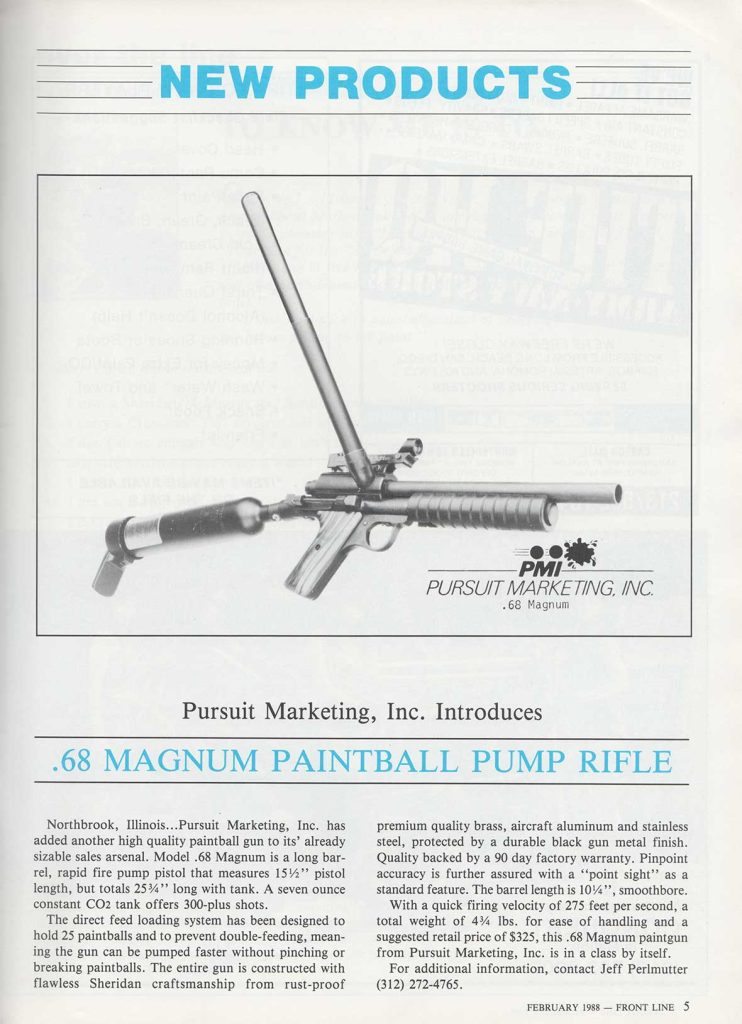
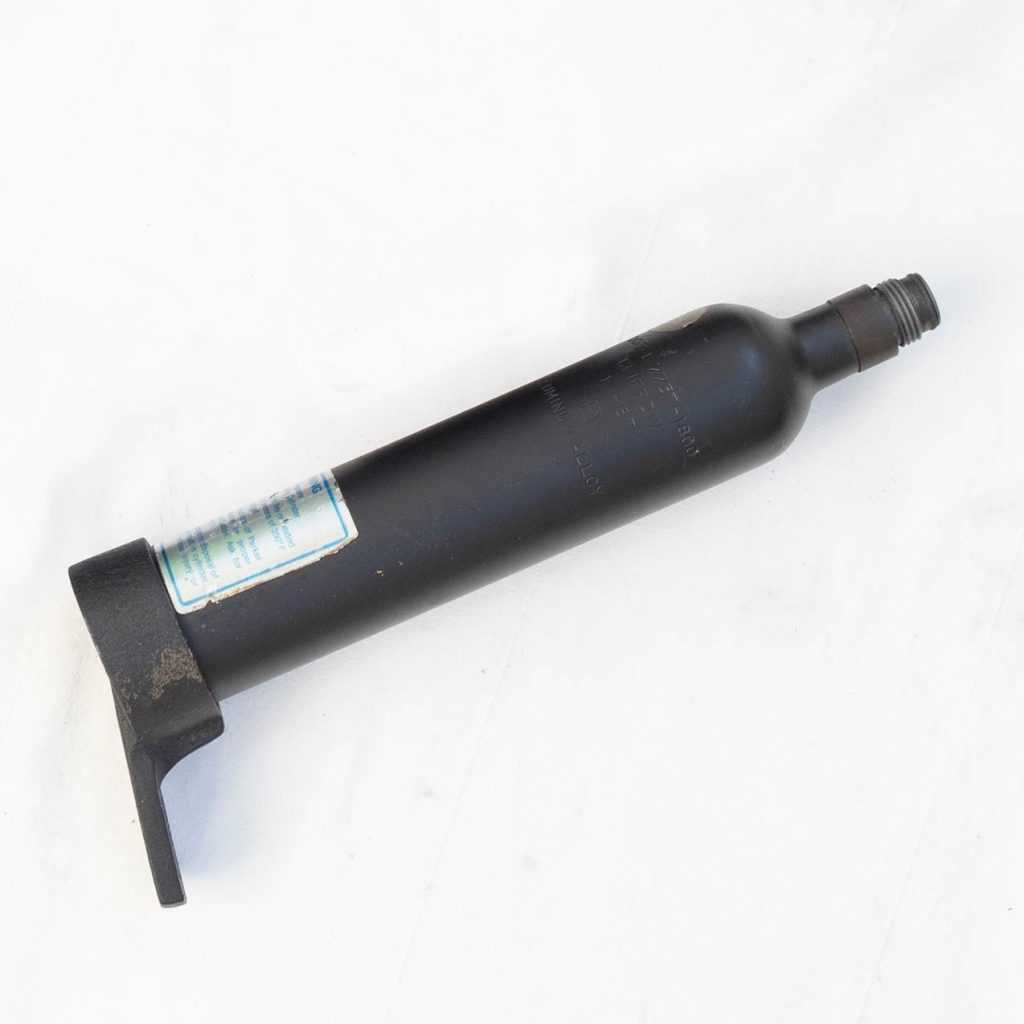
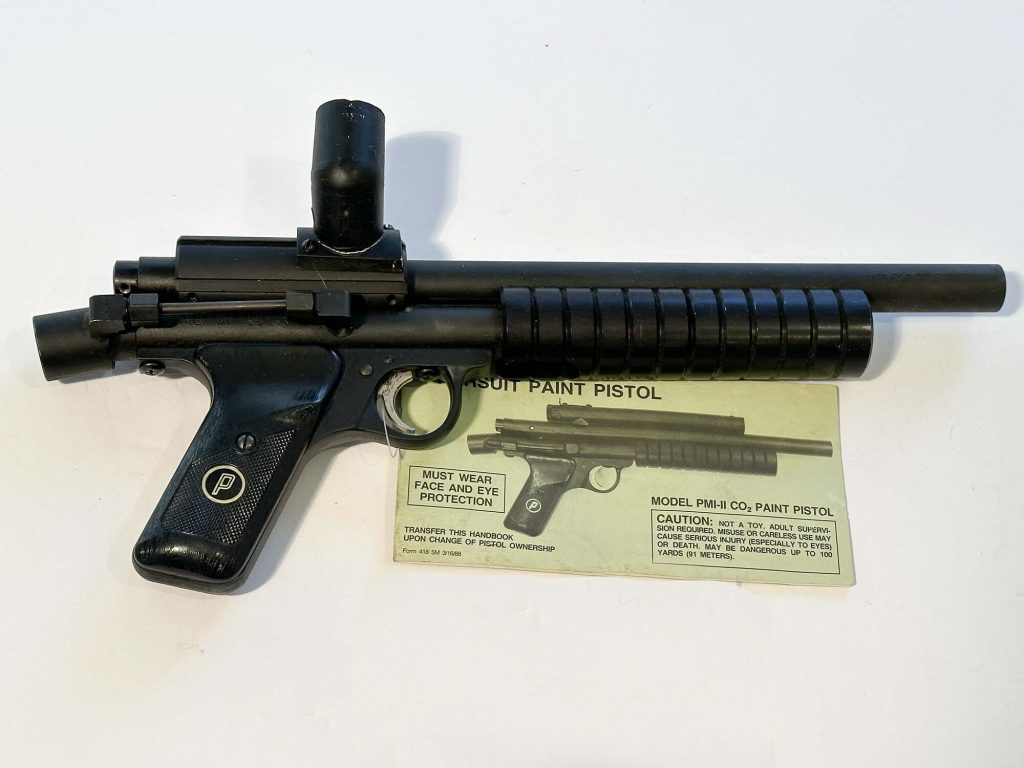
David parts ways with PMI and funds Tippmann Pneumatics, Inc.
It was around this time that David became dissatisfied with Benjamin Sheridan’s lack of commitment to R&D to develop a semi automatic marker. The partners chose to have David depart as a the public face of PMI but still remained partners with Jeff over the years.
APG writes, in a staff report, published in the December 1990 article, titled Inside Benjamin Sheridan (scanned towards the top of this article), “The paintball business was booming but after years of a very successful partnership, Dave Freeman left the PMI company in [1986] for greener pastures and Jeff has been solo at the helm since.”
Jeff explains the backstory, “We understood that a semi automatic paintball marker was necessary for the evolution of the sport. Sheridan’s unwillingness to invest in developing such a product forced us to pursue other alternatives.”
Upon the chance meeting of Jeff, David and Dennis at that Shot Show, the partners identified Dennis as a potential candidate to develop a semi auto / full auto paintball marker for them based on Dennis’ then current efforts to produce and sell a fully automatic bb gun with a constant air source.
Jeff recalls that he and David “had a hard time convincing Dennis that a fully automatic BB gun had limited market appeal, but if he were to modify the concept to shoot a paintball and power the marker with some sort of larger gas source than a 12 gram, which was the current method for existing paintball markers, the product could be very desirable.”
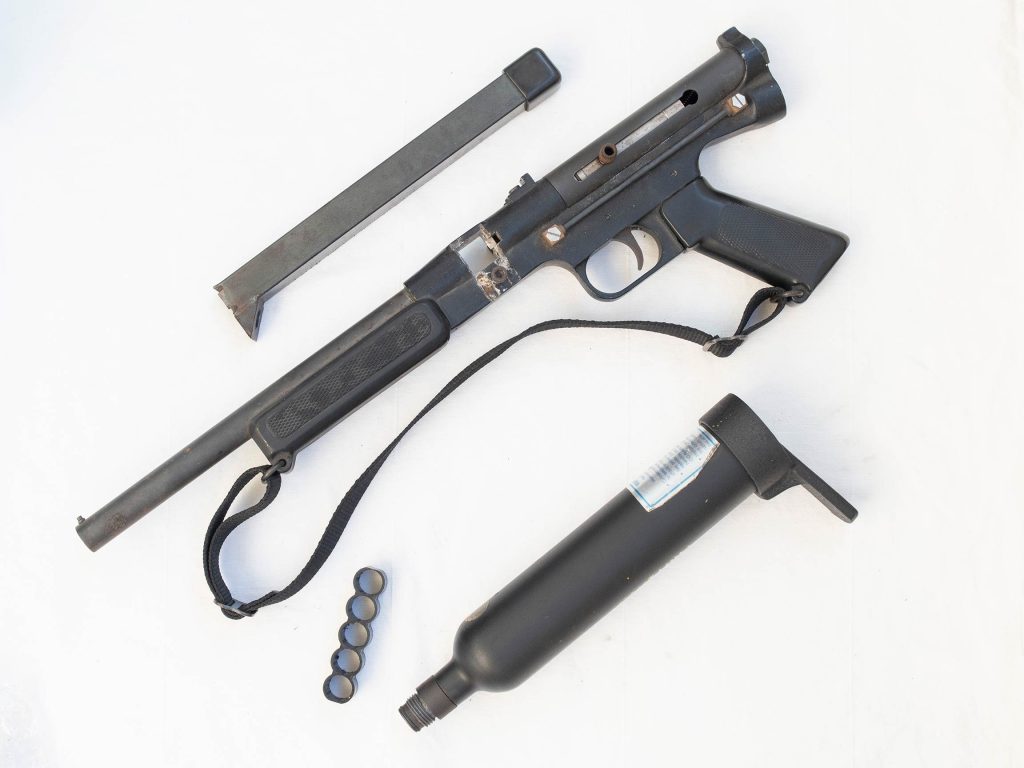

After David stepped away from PMI, Jeff and David funded 100 percent of the development costs for what became the SMG 60 and Tippmann Pneumatics, Inc. with David as the president.
Jeff describes this chronology, “Throughout the following year, Dennis continued his attempts to perfect a semi auto / fully auto paintball marker that shot a .60 cal paintball, supplied by PMI / RP Scherer, powered by a 7oz co2 tank with pin valve screwed into an asa that Tippmann had innovated. As production markers were produced, David, through Direct Connect, proceeded to market and sell them to PMI’s existing customer base. The shipments were made from Fort Wayne, IN, to PMI customers throughout North America.”
Jeff talks about the end of their relationship with Dennis, remembering that at some point near when the SMG became totally debugged (likely end of 1987), “Dennis decided he no longer needed to honor his partnership with David and myself, who provided 100% of the funding required to launch the product, Tippmann Pneumatics, Inc. as well as the customer list to sell them to. The resulting controversy ended up in federal court, where we had no appetite for litigation and resulted in a settlement for pennies on the dollar to resolve the issue and move on.”
Ultimately constant air utilizing Tippmann’s concept of a pin valve and air source adapter (ASA) became standard practice on the majority of paintball markers produced.
Consistent with PMI’s philosophy, David and Jeff would continue working with other young innovators over the next few years, including Tom Kaye, Bud Orr, Kenneth Farrell (Fastech) and Brian Sullivan (Trracer) just to name a few, to develop new razors for their blades (paintball markers for their paintballs).
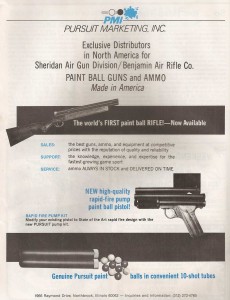
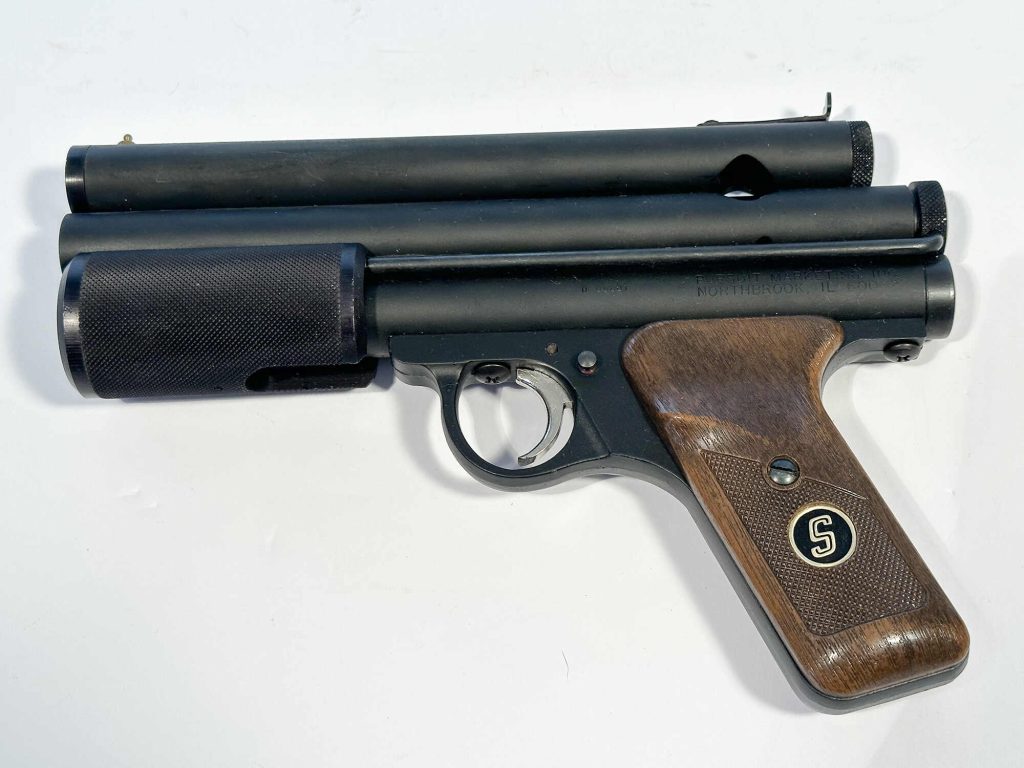
Pursuit Marketing, Inc. Reinvesting in the Sport
Jeff explains that Pursuit Marketing, Inc. “Reinvested a large percentage of the resulting profits from sale of their paintballs to fund the growth of the Sport.” These reinvestments included advertising, PR, tournaments funding, and team sponsorship as well as product development. Jeff goes to state that, “I learned an important lesson from a very wise person, that constancy of purpose is the key to success. To employ this philosophy we were very focused on developing as large a market as we could to sell paintballs to. So it was in our best interest to build consumer awareness of this new Sport called Paintball.”
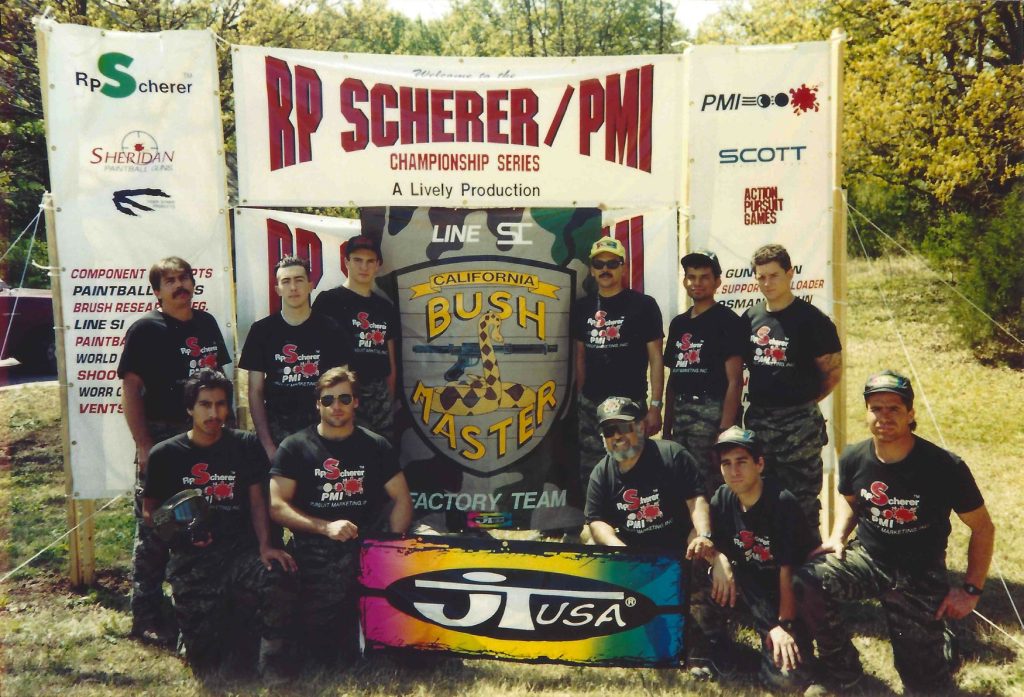
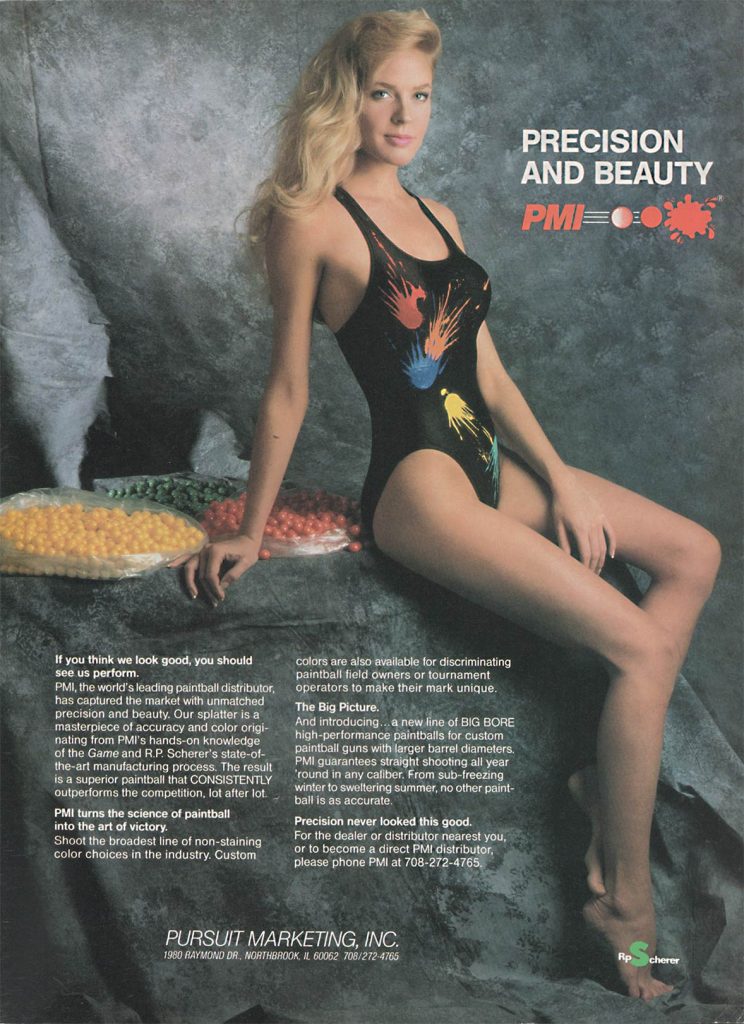
According to Jeff, PMI commanded a majority of the market share for paintballs worldwide for almost the entirety of their business history (1982-2005). Based on PMI dominating market share for paintball sales, it made sense to for PMI to “Promote the Sport of Paintball in a generic sense.” And Jeff continues, “we maintained a low profile about our success and the growth of the Sport in an effort to not welcome lots of competition.”
When Frontline was released in 1985, it combined written highlights from all the local fields with photos to further excitement in Southern California and featured PMI’s ads, showing the PGP pistol and K series rifle.
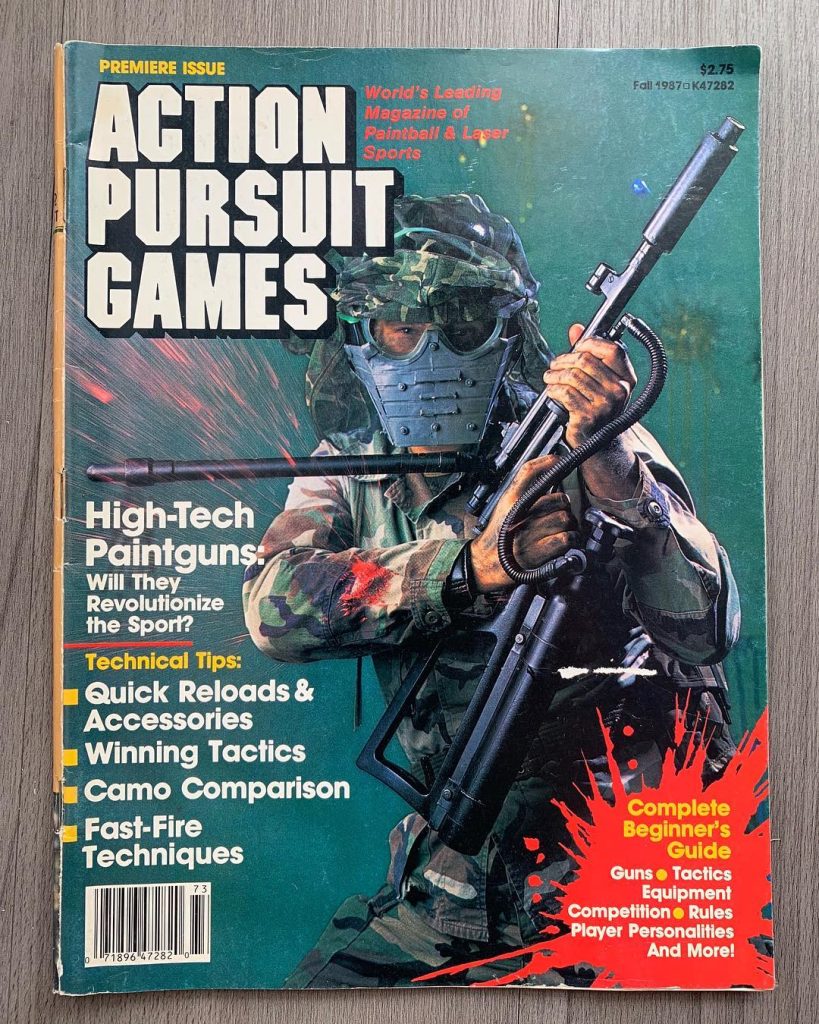
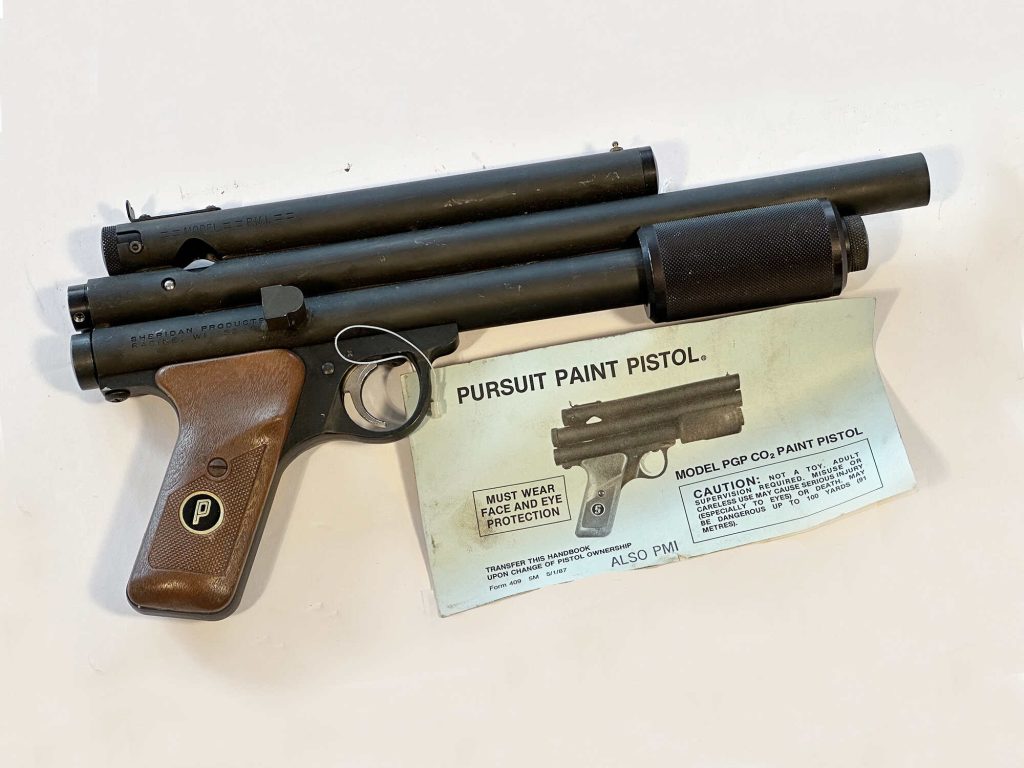
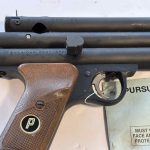
When editor Russell Maynard and publisher CFW Enterprises launched the nationally distributed Action Pursuit Games (APG) Magazine, in Fall of 1987, Jeff and David became a major advertiser with both the PMI and Tippmann Pneumatics, Inc entities.
A full page ad for PMI’s new Pursuit Pistol filled the inside cover of the premiere issue of APG. This new model featured a rim fire bolt (PGP length), a slightly longer barrel than a PGP and a cast steel constant air adapter. The adaptor would allow tanks equipped with Tippmann’s newly introduced constant air pin valves to screw in.
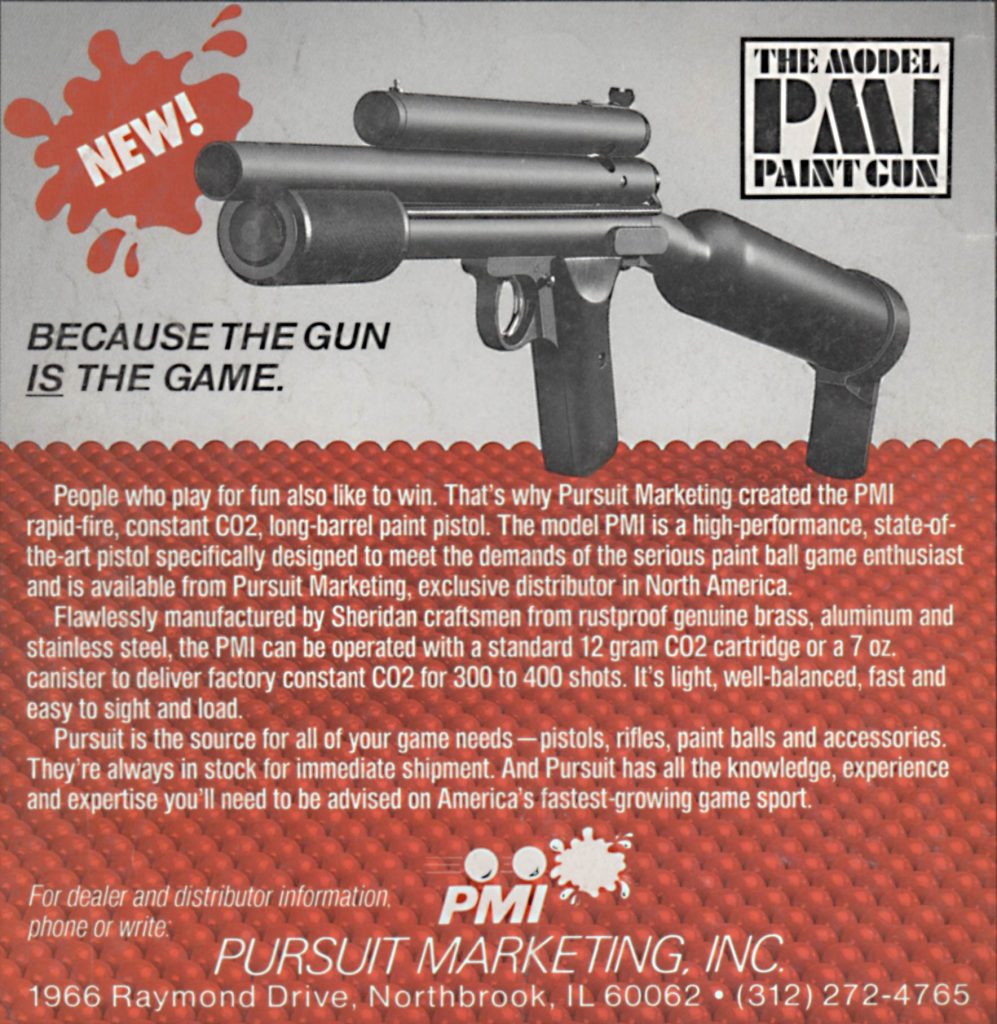
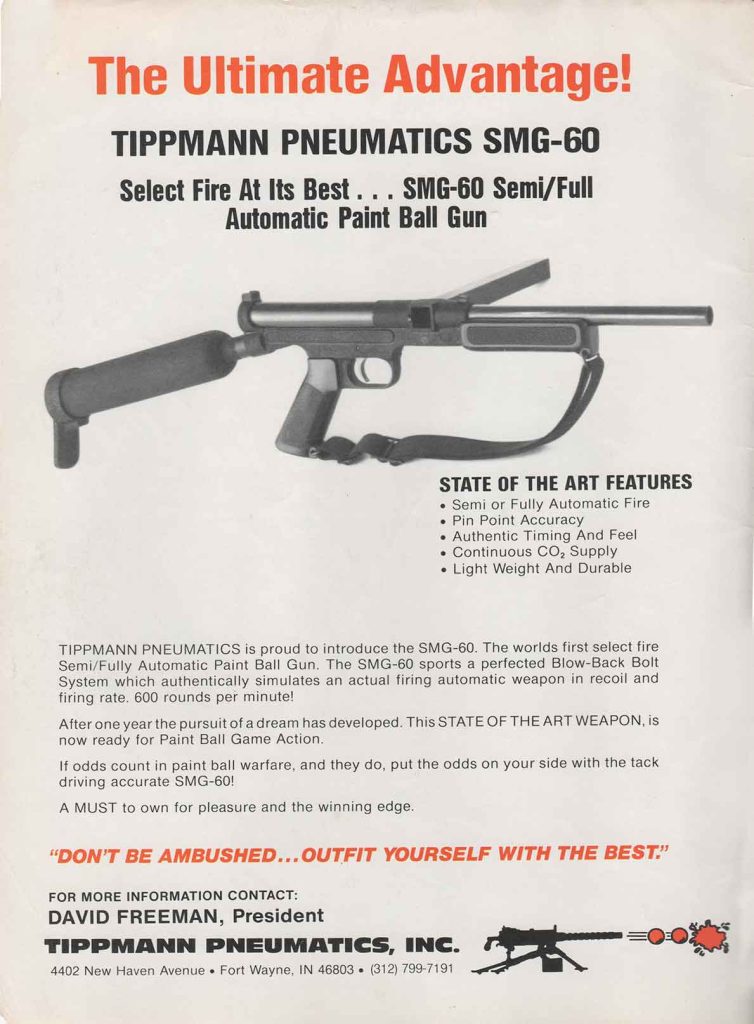
APG’s third page featured a color ad for Tippmann Pneumatics, Inc, which showed a pre production model of the SMG-60 and directed dealers to contact “David Freeman, President” for details.
Jeff proclaims that “During this period, no company came close to PMI as the biggest advertiser in every issue of this publication and others to come after.”
Jeff points out that PMI embarked early on with efforts to sponsor, promote, and provide large prize money for many of the largest tournaments in North America, and subsequently in England through their European distributor, Paul Wilson and Stephen Baldwin at Mayhem UK.
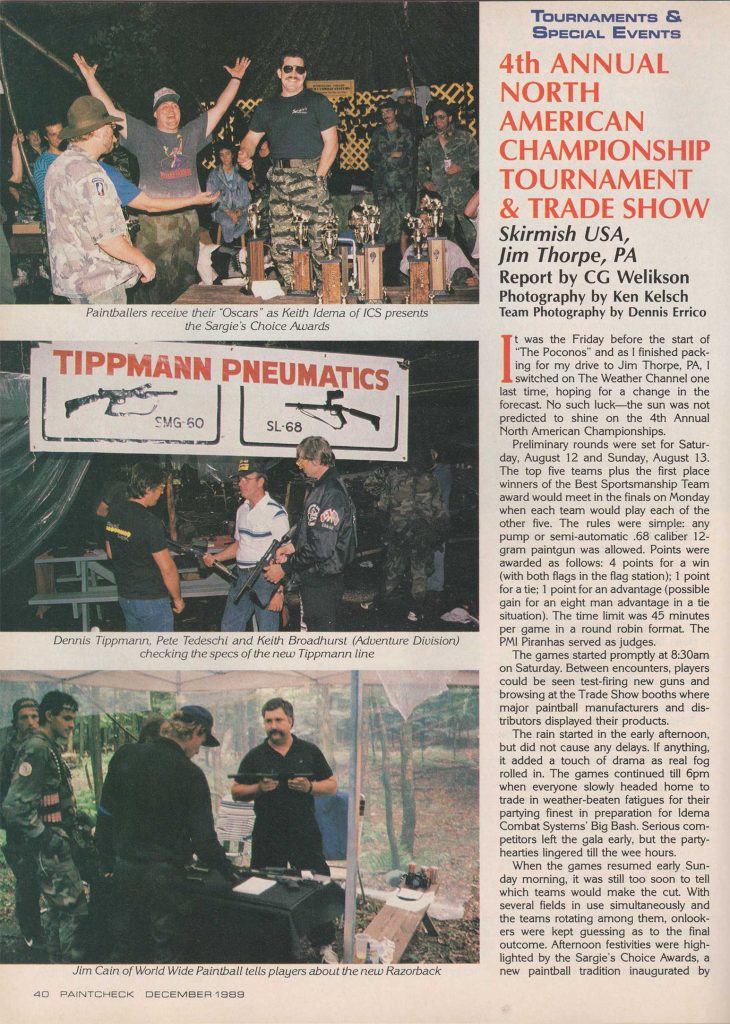
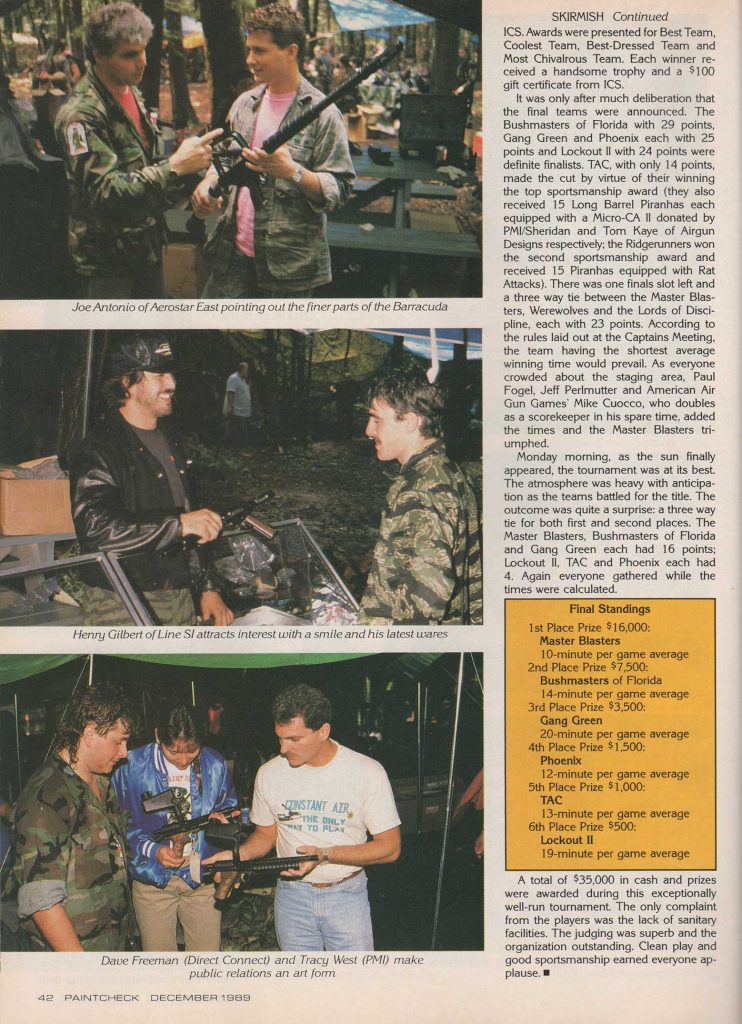
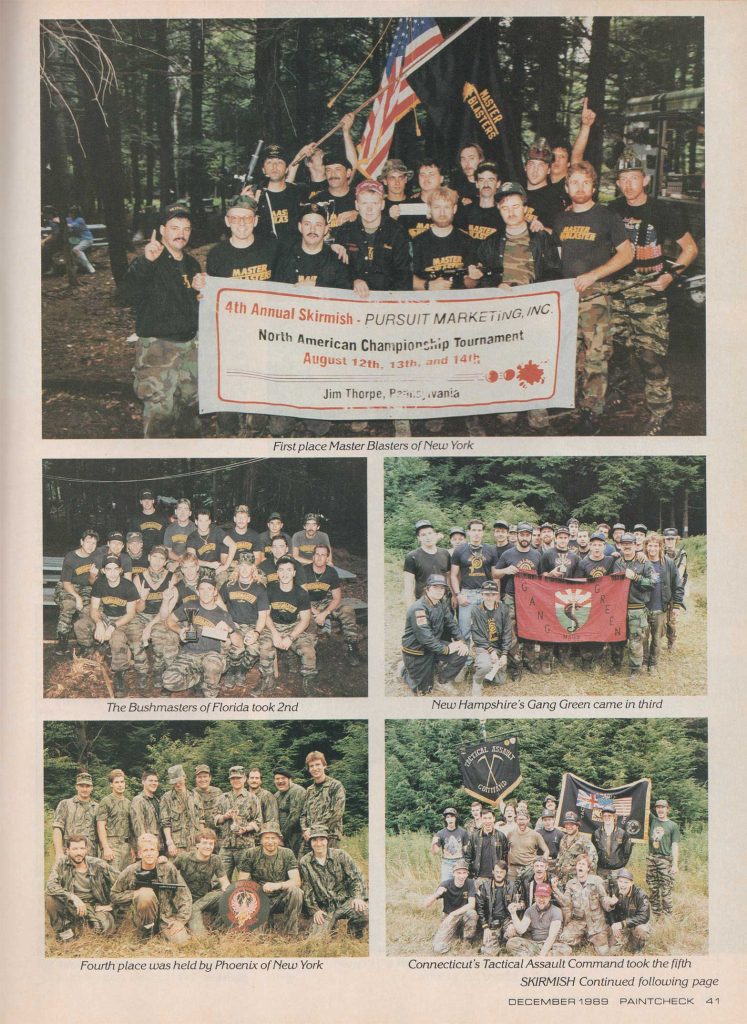
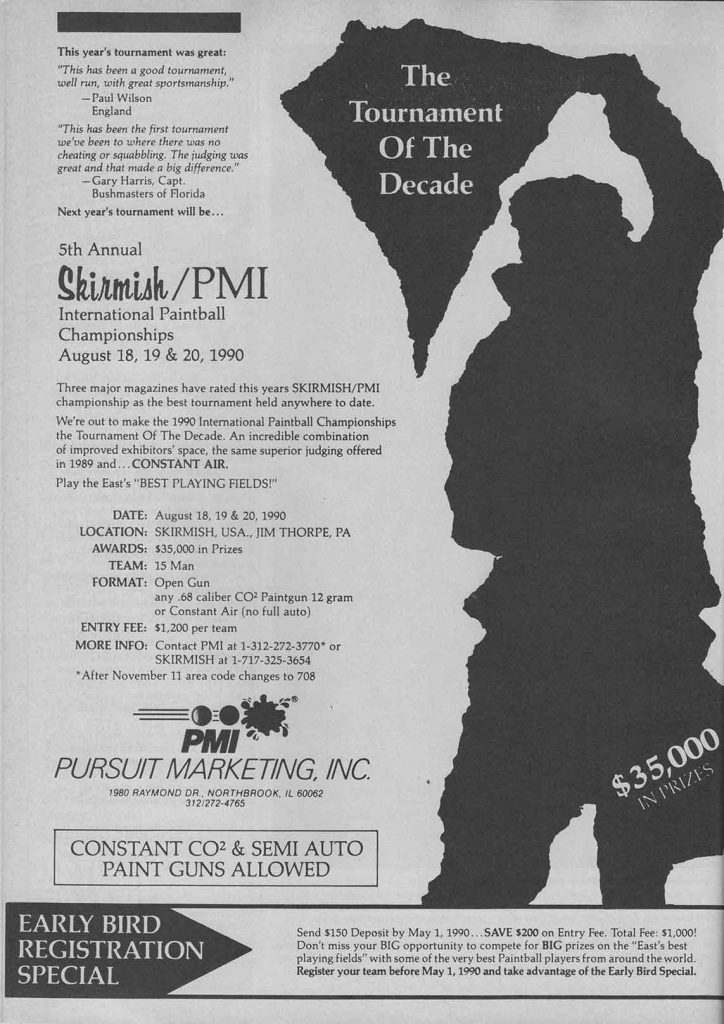
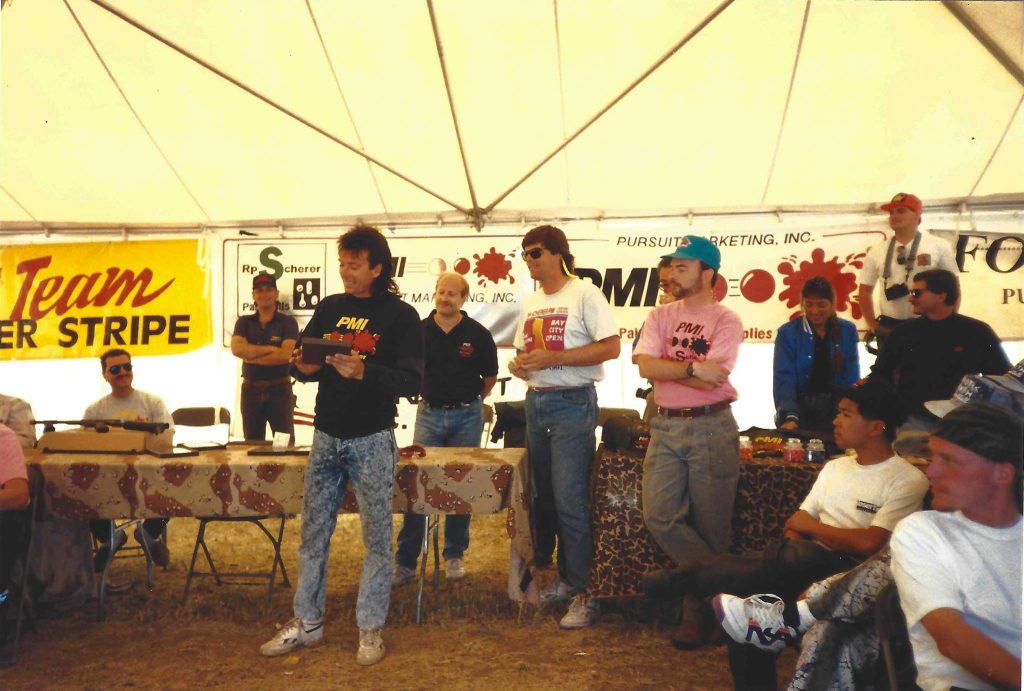
In the mid 1980s, PMI partnered with Paul Fogal, of Skirmish USA in Jim Thorpe PA to produce the the North America Championship Tournament and Trade Show.
This tournament launched in 1986, with the 1989 and 1990 tournaments each offering $35,000 in prizes. In 1989, the Master Blasters took first, followed by the Florida Bushmaster finishing 2nd and Gang Green taking 3rd.
According to Jeff, “Fogal was an early PMI customers, and remains one of the largest and most successful commercial paintball gamefield operators in the world.” Fogal had started the paintball side of his white water river rafting business in mid 1984 with David Luxton’s Air Gun Game Supply / Simutech MK 1 “Uzi” Pistol and later moved to PMI’s PGs markers along with RP Scherer ammo sometime in 1984.
PMI Sponsors The Lively Series
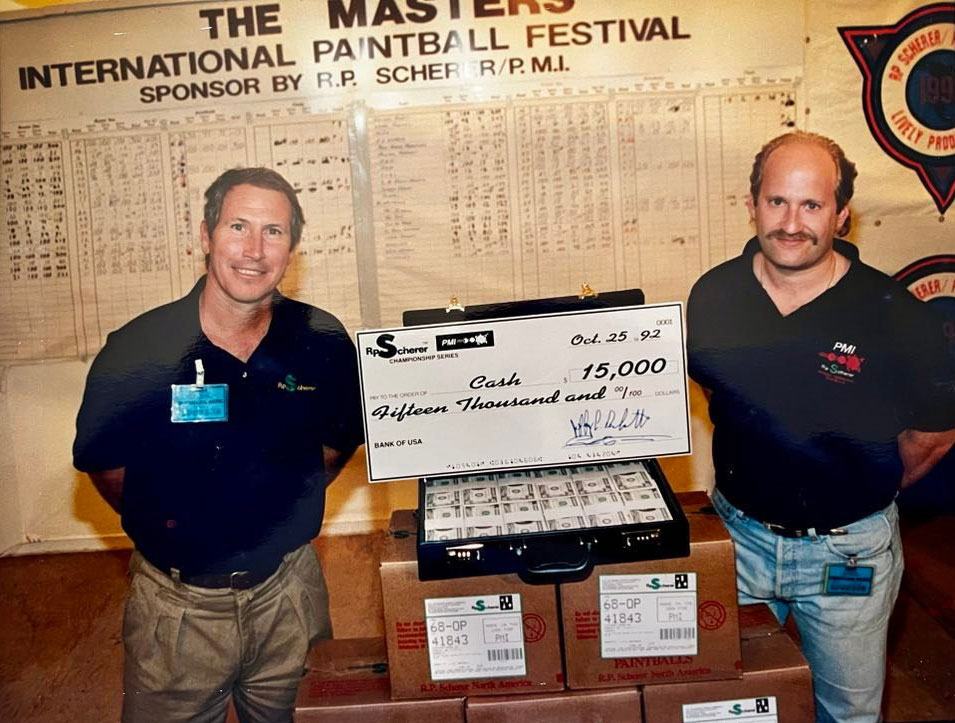
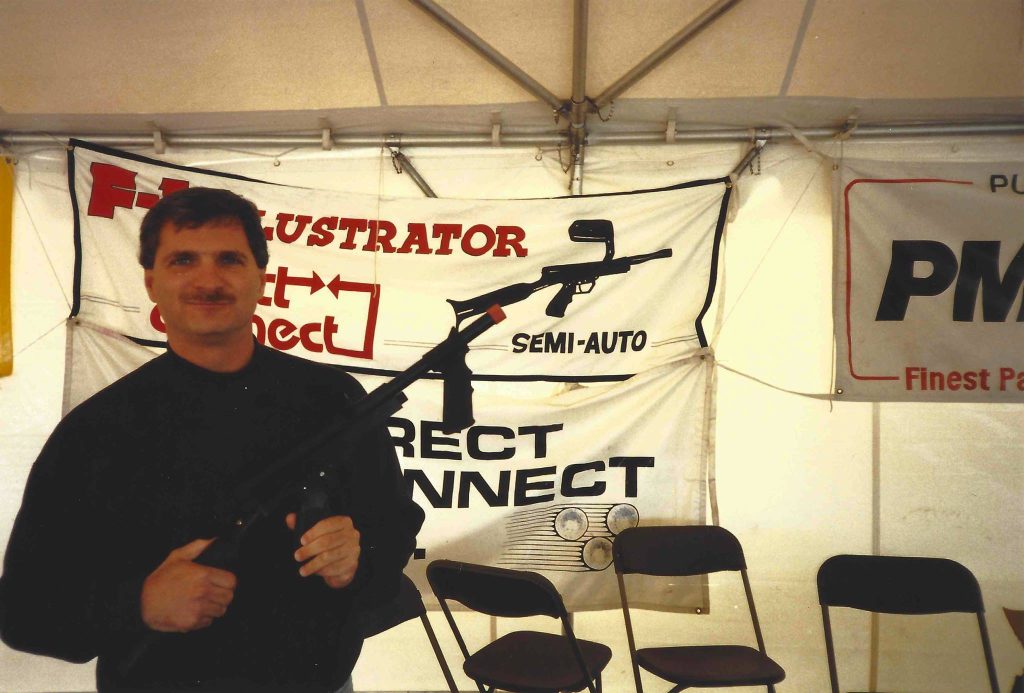
In the late 1980s and early 1990s PMI / RP Scherer NA were major sponsored the Lively Tournament Series, run by Jim Lively and Sam Caldwell out of Nashville TN. This series hosted events nationwide and drew a large crowd. In 1991 and 1992 the Lively series featured PMI in the series name, along with paint manufacturer RP Scherer NA, as the exclusive paintball suppliers for all the events.
PMI always had a presence at events they sponsored, with Jeff being the presenter of the prize money to the winning teams.
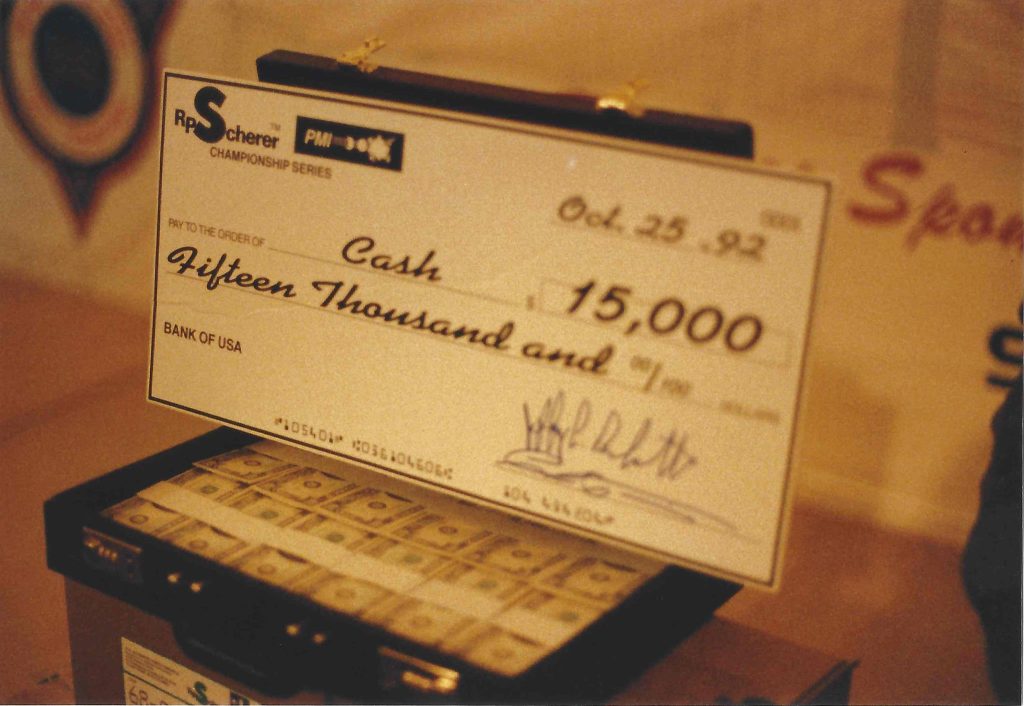
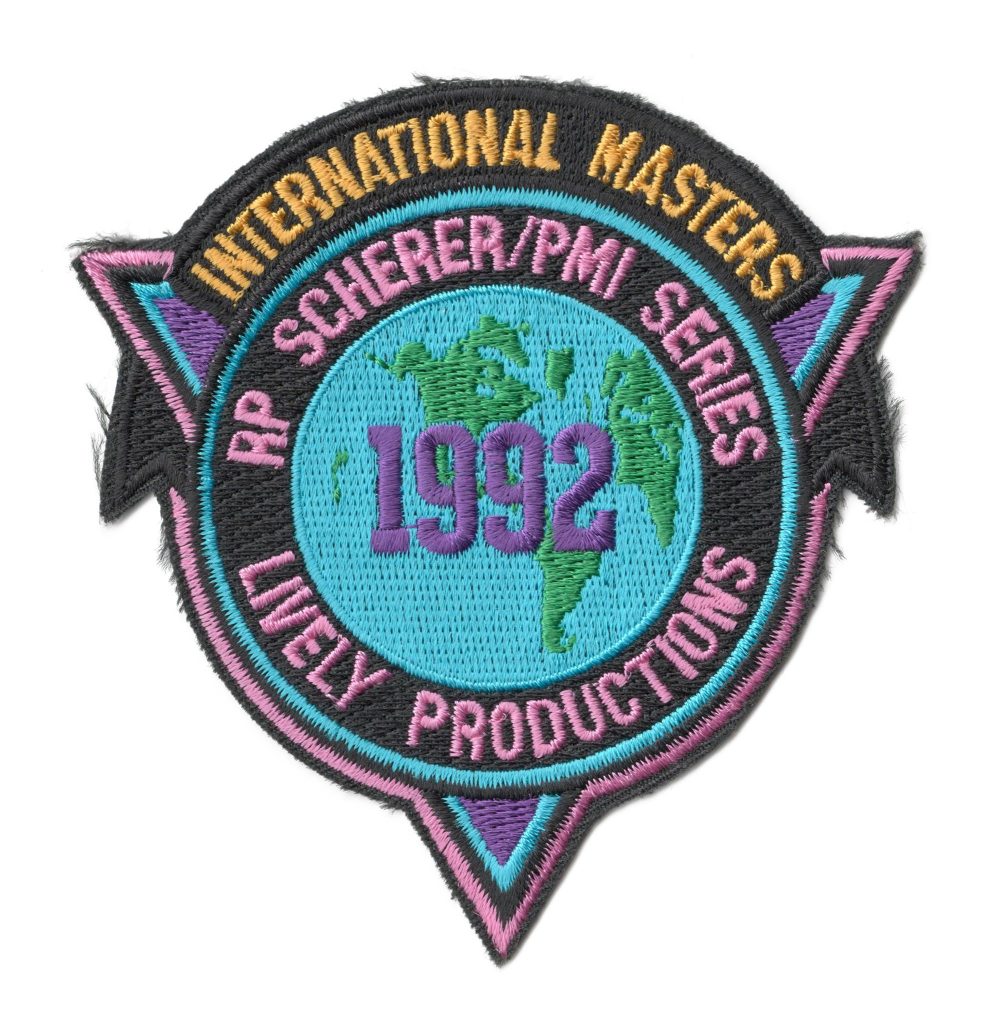
For the 1992 Lively Masters event, Jeff was escorted to Nashville by private security, as he transported a briefcase filled with $15,000 cash, which would go to the 1st place team.
Pursuit Marking, Inc. Sponsored Teams and the PMI Piranha Tournament Special
According to Jeff, “During the entirety of its business, PMI was the largest sponsor of Paintball teams, professional and amateur alike. No other company sponsored more teams with more money and products than PMI.”
In October of 1989, PMI sponsored teams took first and second place at the Lively Masters Tournament shooting factory modified PMI Piranha pump markers.
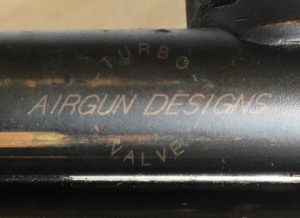

Advertised as the Piranha Turbo Models, these Piranha Long Barrel and Short Barrels featured an opened up “Turbo Valve,” stem and hammer from PMI contractor Airgun Designs / Tom Kaye. The 1989 Lively Series didn’t allow constant air, so the Lords of Discipline and Sudden Death combined their Tournament Specials with AGD’s Micro CA II and 6Pak lever changers.
The Piranha Long Barrel and Short Barrel turbo markers, were custom engraved with “AGD Turbo Valve” and some featured team names.
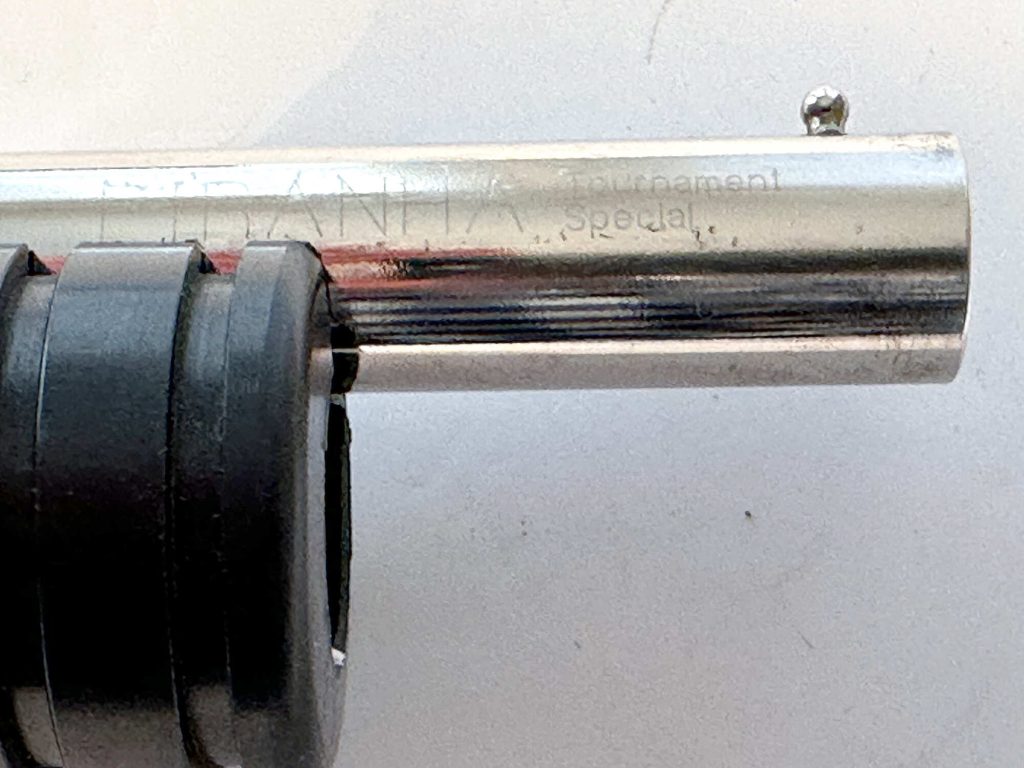
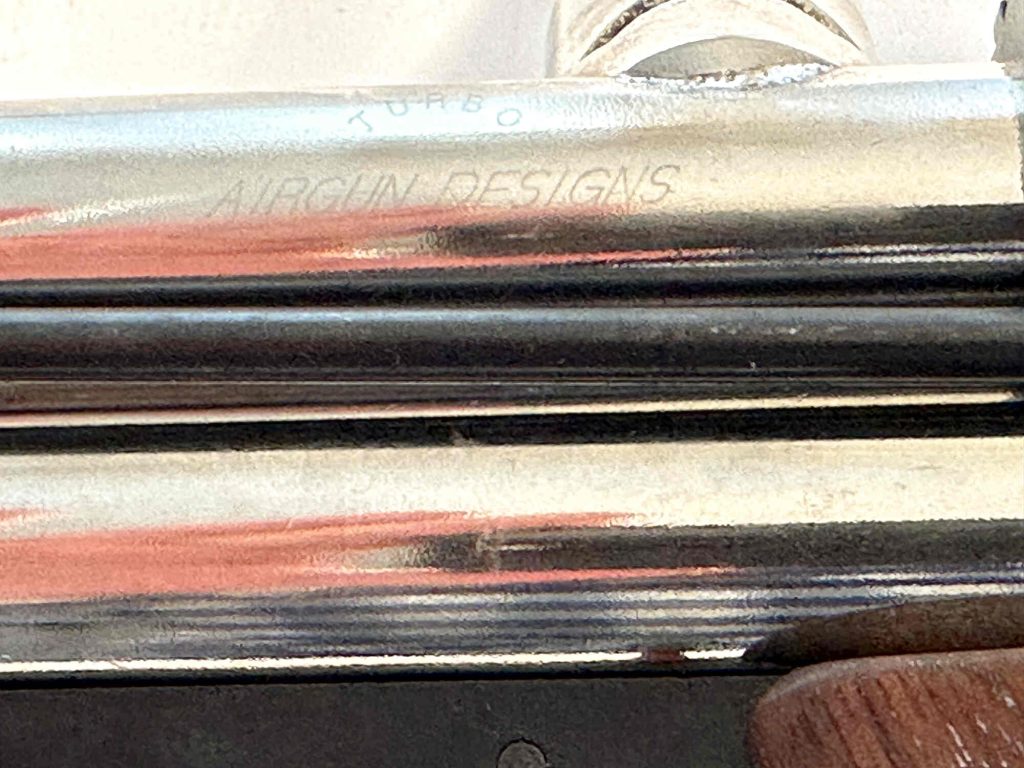

The later turbo valved model of the Piranha line would be advertised in early 1990s magazines as the Piranha “Tournament Special.” These PMI Piranha Tournament Special Long Barrel and Short Barrel markers were custom built by the factory for the top PMI sponsored professional teams including the Lords of Discipline, captained by Bill Zoll, and the PMI Piranhas’ captained by Caleb Strong. Strong was “One of the first NSG franchisees, first indoor gamefield operator and subsequently a minority shareholder in PMI,” according to Jeff.
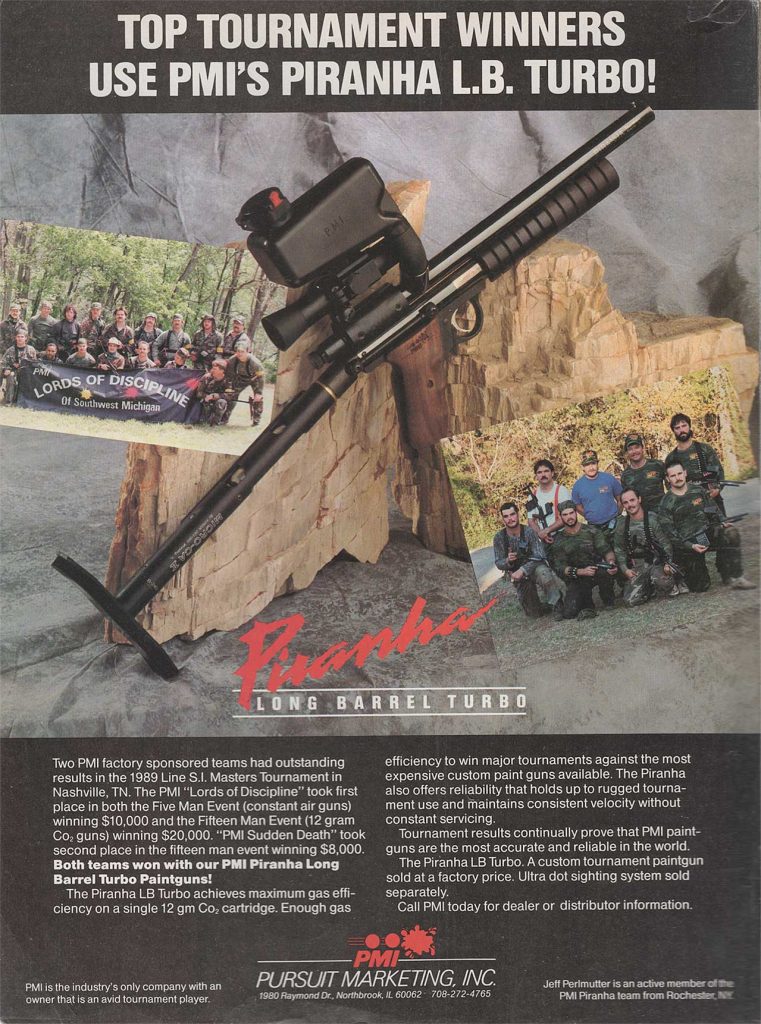


An estimated 60-75 “Airgun Designs Turbo Valve” engraved blackened brass Piranha Long and Short barrels were manufactured for the top four or five PMI sponsored teams (each teams having 15 or so players) including Lords of Discipline, Farside, PMI Piranhas and Sudden Death.
Likely 30 Piranha Tournament Specials were also produced in limited quantity in polished nickel and black nickel finishes with the “AGD Turbo Valve” engraving making the Piranha Turbo and Piranha Tournament Special models the most collectible factory PMI tournament gun from the 1980s. Of these 30 Tournament specials Tom Kaye told Jeff he believes that 12 nickel played Piranha Tournament Special Short Barrels were produced. Jeff retained two of these Short Barrel Piranhas for his collection, which are featured on Bacci Paintball.

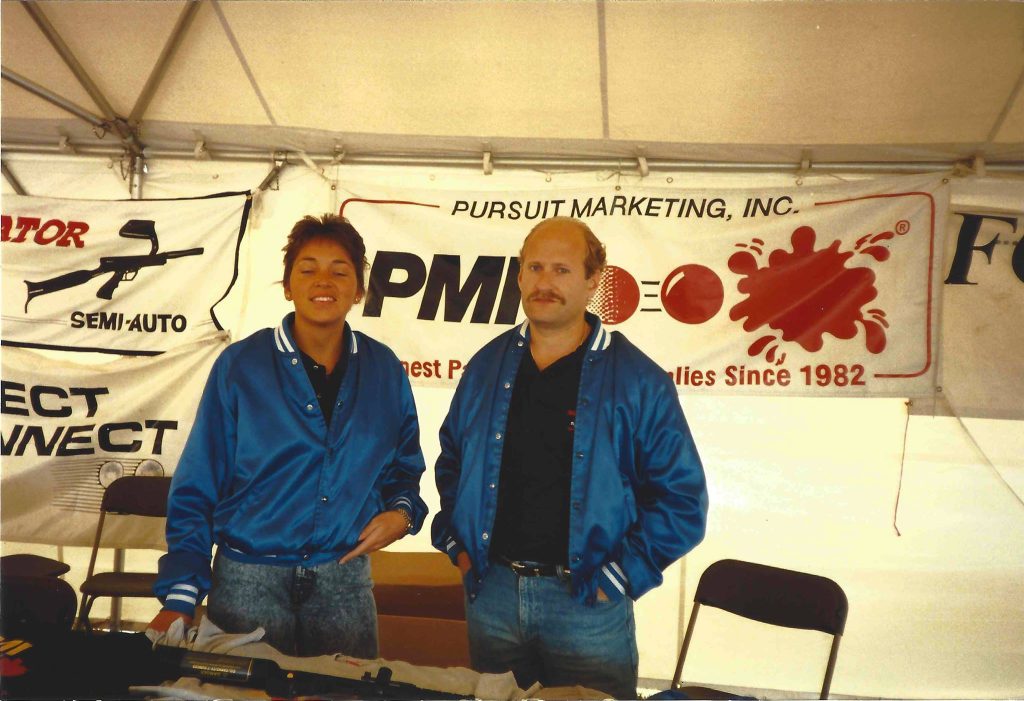
Pursuit Marketing, Inc. over the years…
Jeff and David remained partners over the next two decades, with Jeff as the president of PMI, and David creating company after company, including Tippmann Pneumatics, Inc. and Direct Connect and furthering the Sport of Paintball worldwide.
Around 1992 PMI launched the Trracer which became a huge success and sold for years.
Direct Connect sold the F1 and F2 Illustrator line throughout the mid 1990s and eventually merged with PMI around 1994.
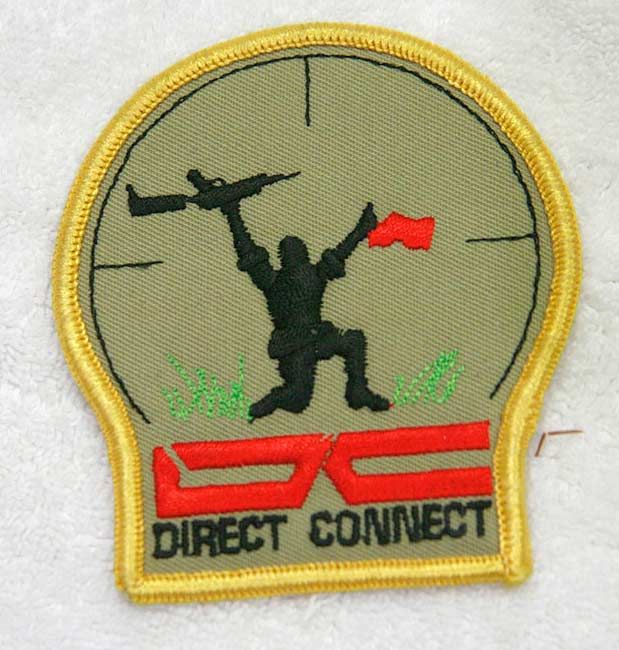
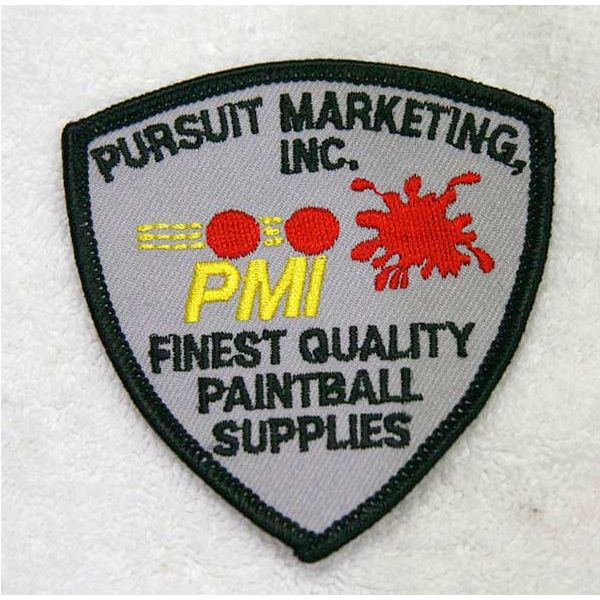
PMI had five distribution facilities in the US, one in Canada and one in England and later purchased R.P. Scherer’s paintball manufacturing facility in Florida in 2004.
Jeff remembers that at Paintball’s peak, in the early 2000s, “PMI sold five billion paintballs in one year and had a gross revenue of $85 million.”
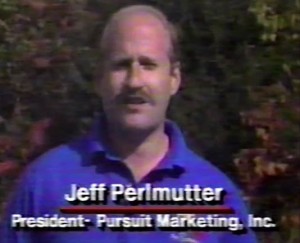
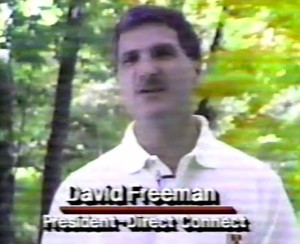
Later in 2005, PMI was sold to a NY based private equity firm that merged the business with National Paintball Supply and renamed it Kee Action Sports.
Upon the sale of PMI, Jeff retired to his home in Deer Valley Utah, and David continued with the KEE’s board and after two years retired from Paintball.
Many credit the accomplishments of Jeff and David as instrumental in creating the Sport and the industry of Paintball and bringing it to a world wide audience.
Randy Kamiya, editor of Action Pursuit Games and Paintball Industry Magazine writes, “Dave and Jeff never seem to get the credit they deserve for helping to build the paintball industry. I was often approached by people outside the industry looking for market information. I told them to look at PMI as an example of a well marketed and branded company.” And Randy continues, “Jeff and David should be in the Paintball Hall of Fame. If not for them, others would not even know paintball existed.”
Tom Kaye, founder of Airgun Designs, manufacturer of the Automag platform and innovator of high pressure air systems, comments, “Jeff and Dave deserve credit for starting the paintball industry we all benefited from.”
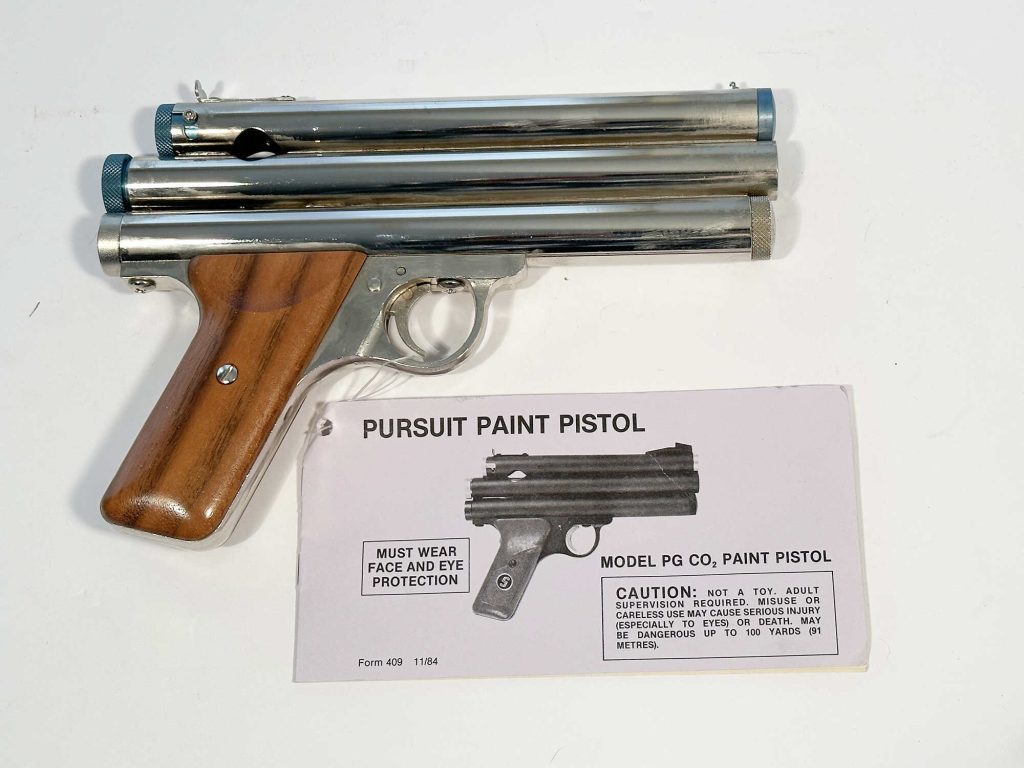
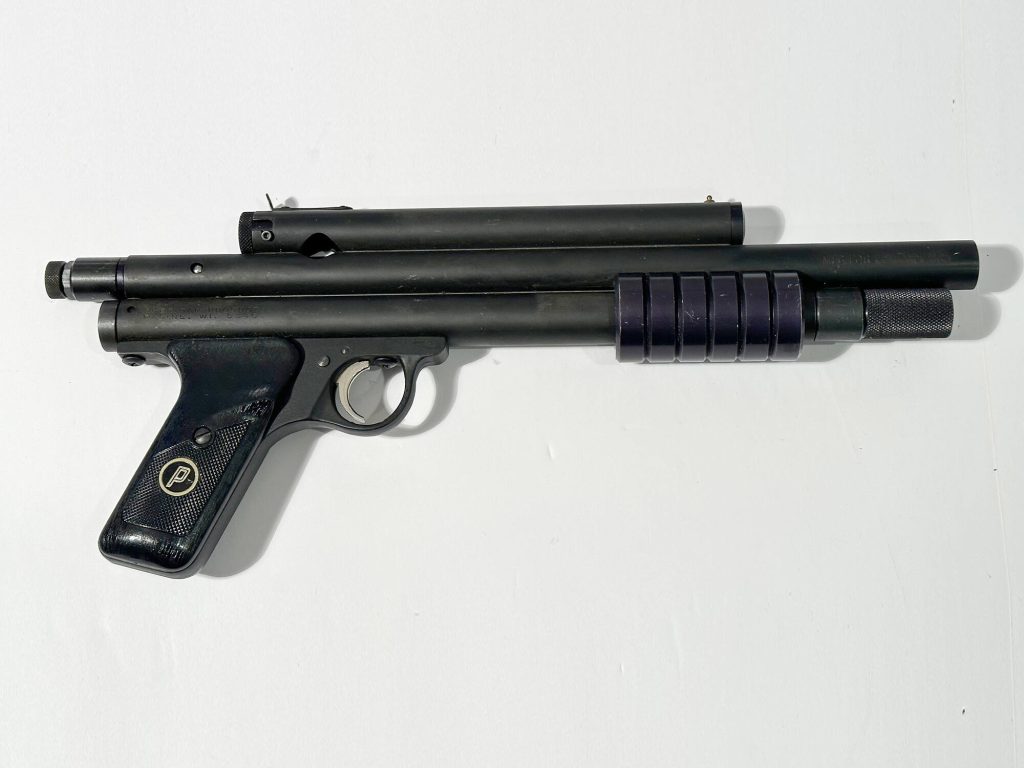
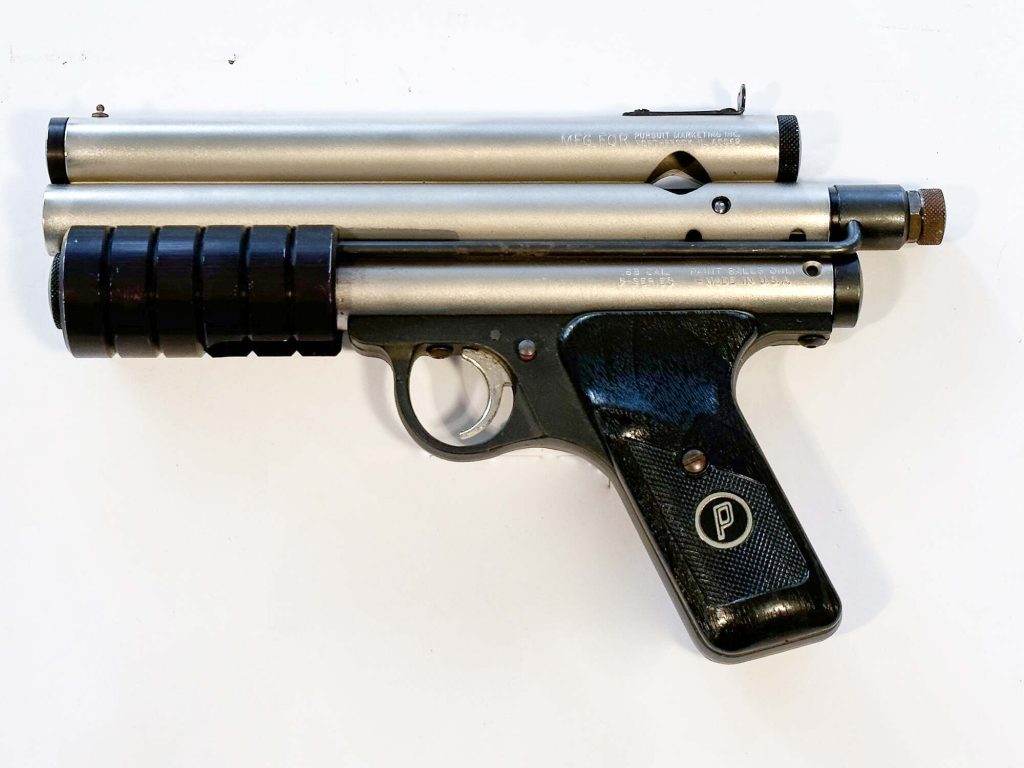
Many of the markers featured in this article are from Jeff Perlmutter’s personal archive and were examples he saved off the production line and markers he was given along the way. Many examples in this collection have never been fired and are possibly the best condition example of PMIs in existence, along with many PMI models that were only available in limited quantities.
Please find markers featured in this article for sale on Bacci Paintball.com.
